0 Volumes
No volumes are associated with this topic
Philadelphia Reflections (6)
New topic 2017-02-06 21:23:28 description
Germantown Nurses the Yellow Fever, 1793
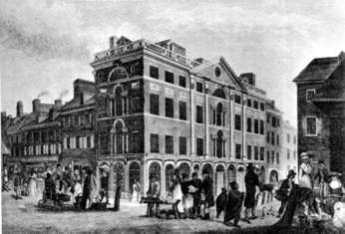
|
| Yellow Fever, Phila |
The French Revolution continued from 1789 to 1799 and created the opportunity for a second revolution in the New World which a second overstretched European country would lose. The slaves of Haiti just about exterminated the white settlers, except for the few who escaped, taking Yellow Fever and Dengue with them. Both diseases are mosquito-borne, so they flare up in the summer and die down in the winter, although the Philadelphians who welcomed the exiles didn't know that. Yellow Fever in Philadelphia was bad in 1793, came back annually for three more years, and flared up once again in 1798. It could be easily observed to be more frequent in the lowlands, absent in the hills. Seasonal, it reached a peak in October, disappeared after the first frost. In the early fall, people died a horrible yellow death, jaundiced and bilious.
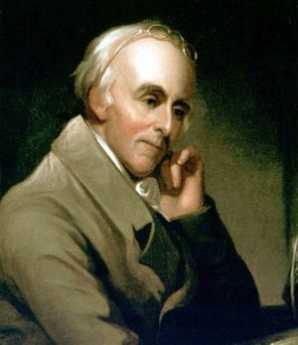
|
| Dr. Rush |
The Yellow Fever epidemic had a profound effect on many things. It was one of the major reasons the nation's capital did not remain in Philadelphia. It made the reputation of Dr. Benjamin Rush who announced a highly unfortunate treatment -- bleeding the victims -- thus provoking numerous anti-scientific medical doctrines based on the relative superiority of doing nothing at all. In Latin, Galen had capsulized the doctrine of Hippocrates in the "Epidemics" as premium non-nocere ("At least do no harm.") It took a full century for American scientific medicine to recover from this blow to its reputation. Whatever criticism Rush may deserve for his Yellow Fever blunder, it definitely is not true that he was a scientific lemon. Medical students are regularly surprised to learn that he is the physician who first identified and described the tropical disease of Dengue, or "break-bone fever", which was a somewhat less noticed feature among the Haiti exiles in Philadelphia. In still other scientific circles, Benjamin Rush is often referred to as the "Father of American Psychiatry". He was one of the founders of the College of Physicians of Philadelphia, the oldest medical society in North America. Medical colleagues who today scoff at the yellow fever episode seem to forget that Rush stayed behind to tend the sick during a devastating epidemic, while many of his more cautious colleagues fled for their lives. An unhesitating signer of the Declaration of Independence, whatever Rush did, he did courageously. Non-academic physicians have sarcastically referred to this episode ever since, as proving that "some people" think it is "better to publish than to perish".
One very good non-medical thing the Yellow Fever epidemic accomplished was to put an abrupt end to the torch-light parades of window-breaking rioters agitating, with Jefferson's approval, for an American version of the guillotine and the terror. Federalists like John Adams and William Bingham never forgave Jefferson or his admirers for this, so the class warfare movement might likely have got much worse if everyone had not suddenly dropped tools, and headed for the hilly safety of Germantown.
The President of the new republic, George Washington, was in Mt. Vernon in the summer of 1793, wondering what to do about the Yellow Fever epidemic, and particularly uncertain what the Constitution empowered him to do. He finally decided to rent rooms in Germantown and called a cabinet meeting there. His first rooms were rented from Frederick Herman, a pastor of the Reformed Church and teacher at the Union School, although he later moved to 5442 Germantown Ave, the home of Col. Franks. Jefferson chose to room at the King of Prussia Tavern.
During this time, Germantown was the seat of the nation's government. As was fervently hoped for, the cases of yellow fever stopped appearing in late October, and eventually, it seemed safe to convene Congress in Philadelphia as originally scheduled, on December 2.
Although Germantown was badly shaken by the experience, it was a heady experience to be the nation's capital. Meanwhile, a great many rich, powerful and important people had come to see what a nice place it was. Germantown then entered the second period of growth and flourishing. Walking around Germantown today is like wandering through the ruins of the Roman forum, silently tolerant of visitors who would have never dared approach it in its heyday.
REFERENCES
| Benjamin Rush: A Discourse delivered before the College of Physicians of Philadelphia: Thomas A. Horrocks ASIN: B0006FCBXS | Amazon |
| Bring Out Your Dead: The Great Plague Of Yellow Fever In Philadelphia In 1793: J.H. Powell ISBN-13: 978-1436715881 | Amazon |
| Germantown and the Germans: An Exhibition from the Collection of the Library Company of Philadelphia: Edwin, II Wolf ISBN-13: 978-0914076728 | Amazon |
Articles of Confederation: Flaws
DURING the twenty-five years (1776-1801) government was in Philadelphia, Americans who had rebelled against tight royal rule uncovered many defects in its opposite -- a loose association of states. Loose associations only preserve fairness by operating with unanimous consent, which is, of course, unfair to a thwarted majority, unless a dissenting minority thwarts itself as a gesture of kindness. The Founding Fathers ultimately devised a formula of weakening power by dividing it into layers -- national, state, county, municipal -- and seeking to confine minority dissent to the weakest political unit. Persuasion and peer pressure were given time to work up the ladder of appeal to a wider, more powerful body of citizens. Bottom upward by choice; top-down only in desperation. Furthermore, persuasion first, force as last resort. An implicit third safety valve emerged: if a good idea is smothered by a local concentration of bigotry, appealing to a wider population includes being heard by more viewpoints. No one claims to have authored this whole prescription or foreseen its hidden benefits; it apparently evolved by trial and error. There was another latent discovery for America's sparse population in a hostile wilderness: maintaining harmony was more essential than efficiency. It would be hard to consolidate more Quakerly concepts of governance in one document. Not exactly assembled, it emerged and was admired. The local Quaker merchants were living proof that harmony made riches for anyone, while force only works against weaker people. George Washington the cavalier general came to Philadelphia and gave it a softly Virginian twist, over and over: Honesty is the best policy. It seems to have originated in one of Aesop's Fables.
 It is not necessary that the [Constitution] should be perfect; it is sufficient that [the Articles of Confederation are] more imperfect. 
|
| James Madison |
Recently examined documentation reveals James Madison, the main theoretician of the closed-door Constitutional Convention, to have been severely contemptuous of state legislatures at this time in his life, and rather severely defeated by John Dickinson in a political quarrel in mid-convention about the powers of small states. From this fragile evidence emerges the idea that in balancing the powers of state and national governments in the "federal" system, it may have been someone else's idea that the greater freedom to move out of an offending state into a more favorable one, would appreciably restrain state legislative abuses. Even with this feature built into the system with the national government to enforce it, Madison is said to have been in a state of depression that the Convention refused to agree to his idea of giving Congress veto power over state laws. It took some time for improved transportation to strengthen this competition between states, but it may not be an accident that Delaware now leads the way in responding to the implicit opportunity.
Philosophy and history are different. The Framers gradually acknowledged a patched charter of tribal allegiance was insufficient and thus adjusted to the idea of a central government. They tweaked a decentralized model of governance to get the states out of the road, without antagonizing them so much they would not ratify it. Although it is commonplace to say the Articles of Confederation were a weak failure, the Articles did reflect American attitudes at the beginning of our formative period. The Constitution would not have been acceptable if the Articles of Confederation had not first been given a trial. By the end of the 1787 Philadelphia negotiation, the nature of the final proposal was to define a few absolutely minimum powers for a national government, identify a few other powers as destructive when in the hands of any other level of government, and leave a vast undefined area: where new and novel problems would be tried out in the states, then passed to a national level if necessary. Anticipating constant mid-course corrections was an important objective for even a minimalist Constitution, not the least of those challenges was to create ways to keep it minimalist. Simplicity itself keeps it hard to change. Starting at the bottom of the layers of government continues to this day to introduce new and unexpected problems to the "laboratory of the states" or even lower, working upward only as proven necessary, or spread nationally only after the solution is highly successful. It is a legacy of slavery, the Civil War, and direct election of Senators (Amendment XVII) that many Americans still fail to welcome the merits of this approach, or lack the patience to try it for their pet ideas. Considering the Articles of Confederation and the Constitution as two documents with continuous goals, we got it right, the second time.
And we got it right in the environment of Eighteenth-century Quaker Philadelphia, where a tolerant examination of new ideas was more venerated than in any other place in the civilized world. With a combination of wisdom and impasse, minor issues were left to the future. It is true this sometimes creates problems of neglect. But it makes it possible to define those few issues which must never change. An unexpected virtue of minimalism surfaced eighty years later: many men understood it well enough to die for it.
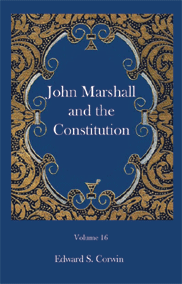
|
|
Edwin Corwin's "John Marshall and the Constitution" |
Much has been written about the separation and balance of powers between the three branches of the federal government. However, the real balance of power in the Constitution in 1787 was vertical, between the central government and the constituent states. Balancing power horizontally, within the central government's branches, is a way of preventing one side of this other argument from tilting the state/federal balance in its own favor, or slowing down the effect of any victories by one side. In other words, it preserved citizen liberty to choose. From this continuing two-dimensional struggle emerges the explanation for filibusters, the seniority system, the confirmation process for Supreme Court and Cabinet appointments. It also calls into question the Seventeenth Amendment, where the state legislatures lost the power to appoint U.S. Senators. In 1786 the states had all the power, in 2009 state power is much diminished; but it is not entirely gone by any means. It is true the cry for states rights, essentially an appeal to the Deity for Justice is futile. If states are to wrest power back from the federal government, it will be by the adroit exercise of powers buried within the balanced powers of the federal branches, but it can succeed if the public ever wants it to succeed. The Framers seem to have overlooked the possibility that federal power could someday outgrow its blood supply, simply growing too big to manage. It is also true the Framers neglected the possibility of a protracted period of disagreement between two halves of the electorate. At least in these particulars, there is room for the further evolution of the Constitutional principle.
While features of the present Constitution can sometimes be linked to the correction of flaws in the Articles, one by one amendment never seemed to be quite enough. Subsequent analysis of Original Intent has often had to contend with the unspoken intent of earlier negotiators to strengthen partisan advantage in later struggles. The political battles being fought at the beginning, which except for slavery are substantially the same today, were sometimes being promoted for reasons which now seem merely quaint. Fine, everyone can agree it was complex. Still, there was a recurring uneasiness: what was the underlying flaw in the Articles? What, as they say, is the take-home point?
One widely accepted summary, probably a correct one, of what was centrally wrong with the Articles of Confederation, lies in a concise observation, which follows, from Edward S. Corwin's book John Marshall and the Constitution:
"The vital defect of the system of government provided by the soon obsolete Articles of Confederation lay in the fact that it operated not upon the individual citizens of the United States but upon the States in their corporate capacities. As a consequence, the prescribed duties of any law passed by Congress in pursuance of powers derived from the Articles of Confederation could not be enforced."
And that's how many Revolutionary Americans, possibly most of them, had wanted to have it. They were in revolt against all strong government, not just the King of England. They surely would have applauded Lord Acton's declaration that "All power tends to corrupt, and absolute power corrupts absolutely." Thirteen years of near-anarchy taught them they must at least give some limited powers to a central government, but it was to be no more than absolutely necessary. For some, the Ulster Scots, in particular, even the absolutely minimum amount was still just a bit too much. In effect, these objectors wanted a democracy, not a republic.
To deconstruct Professor Corwin's analysis somewhat, the equality-driven followers of Thomas Jefferson believed the insurmountable obstacle for uniting sovereign states is that they are sovereign, and won't give it up. The merit-driven followers of Alexander Hamilton, Robert Morris, and George Washington bitterly resisted; in business and in war you need the best leaders to rise to power. The function of common men is to select the best among themselves to be leaders. Only James Madison seems to have grasped that ideal government might tend more toward a republic for purposes of the enumerated federal powers plus enumerated powers specifically denied to the states. For lesser issues, perhaps a purer democracy would be just as workable. However, in operation, it took scarcely a year to discover that the common man would not automatically select the best man he knew to be his representative. In fact, there exists a considerable populist sentiment, that wealth and success outside government are actually disqualifications for office. To some extent, this reverse social Darwinism is grounded in an unwillingness of the upper class to serve in government, perhaps because service to the country interferes with the lifestyle of unrestrained power and wealth which other occupations allow, but is forbidden to public servants. In any event, we persist in the fruitless argument whether America is a democracy or a republic; it was designed to be a mixture of both. Within the time of the first presidency, the unattractive realities of mixing human nature with elective politics transformed the meanings of the Constitutional document to something that was never written there, and other nations have largely failed to grasp. It apparently also worked a major transformation in its main author. James Madison first quarreled with his ally, Alexander Hamilton, and joined forces with the Constitution-doubter Thomas Jefferson. His mentor and idol, George Washington, essentially never spoke to him again.
---------------------------------------------------------------------------------------------------------------
States rights no longer confronts America directly, because the Founding Fathers managed to get around it until the Civil War, and then the Fourteenth Amendment enabled the federal judiciary to attenuate state sovereignty somewhat further without eliminating the architecture of a federation of states. In other words, in two main steps we deprived the states of some sovereignty, but no more than absolutely necessary, and we took more than a century to do it. The European Union currently faces the same obstacle; this is how we solved it. If they can get the same result in some other peaceful way, good luck to them. Our framers used the language "Congress may...or Congress may not..." They only dared to strip state legislature of a few powers because they needed the legislatures to ratify the Constitution, a gun you can only fire once. Thus, they forbade states the right to issue paper money, the power to interfere in private contracts, and such, as enumerated in Article I, Section X, where the operative phrase is "The states are forbidden to..". The framers were willing to strip the unformed Congress of many more specific powers than the all-too-existing states; the Constitution can be read as a proclamation of the powers which any central government simply must possess. There might be other desirable powers, but here is the minimum. After eighty years, individual Southern states asserted their unlimited powers extended to nullification and secession, and because of a perceived need to preserve slavery would not back down. The Constitutional consequence of this national tragedy was the Due Process section of the Fourteenth Amendment, which has since been purported by the Supreme Court to mean that whatever the federal government may not do, the states may not do, either. However, Due Process traces back to the Magna Carta and has been so tormented by an interpretation that for the purpose stated, it is growing somewhat too elusive to remain useful. For historical reasons, we never gave a fair trial to the original proposal to address the federal/state dilemma. The Constitutional Convention was held in confidence, many delegates changed their minds along the way, and many ideas were more perceived than enunciated. It is plausible that the original strategy originated with Madison's teachers and emerged from many discussions, but there were several delegates in attendance with the sophistication to originate it. In a convention of egotists, there were even a few who would put their ideas in someone else's mouth.
The concept of how to curtail power in a non-violent way, can be called Regulatory Competition. Mitt Romney seemingly plans to promote the idea as a central feature of his political run for President of the United States, using a variant he has developed with Glenn Hubbard, the Dean of the Columbia University School of Business. The idea does still work reasonably well with state taxes and corporate regulation. If a state raises a tax, estate tax for example, in a burdensome way, people will flee to a state with more reasonable taxation. Corporations have learned how to shift legal headquarters to Delaware and other states which court them, and in really desperate cases will move factories or whole businesses. There is little doubt this discipline is effective, and little doubt that some cities and states have been punished severely for encouraging an anti-business environment. Whether the Fourteenth Amendment could be cleverly amended to expand this competitive effect without reintroducing segregation or the like, has not been seriously considered, but perhaps it should be. There are however not too many alternatives to consider.
As far as advising our European friends is concerned, it would be important to point out that the original version of Regulatory Competition completely depends for its effectiveness on the freedom to flee to some other state within the union. A common language is a big help to unity, but the ability to move residence is essential, so for practical purposes, both a common language and freedom of migration are required. Underlying such concessions is a sense of tolerance of cultural differences. That is unfortunately where most such proposed unions have either resorted to violence or failed to unite. And of course, the power which might otherwise be abused must then be shifted from the federal, back to a state level. What surfaces is a sort of one-way street? It remains far easier to devolve into little statelets than to unite for the benefits of scale. A working majority under the likes of Thomas Jefferson might have been assembled in the Nineteenth century but was held back by coping with the expanding frontier. During the Twentieth century, it would have been held back by the need to deal with world power. The Second Tea Party seems to have some inclination along these lines, but it remains to be seen whether some overwhelming need for world power will once more overcome the obvious national ambivalence about it.
The revised proposal for the regulatory competition takes the proposal to a different level, possibly a more workable one. Workers in the United States can freely move from one state to another but are restrained by national laws from equally free movement between nations. Removing that barrier makes the European Union attractive, although it inflames local nationalism. Since it seems more palatable to allow the currency to move, perhaps a little tinkering would be sufficient to permit uniform monetary rules to be the hammer which forces nations into permitting free trade on a global scale. The people themselves can remain at home in their national costumes, perhaps perfecting their religions in more churches and language skills in more schools. Meanwhile, the insight of Adam Smith would prevail for the long-term prosperity of everyone. Each party in a transaction feels enriched by it, the seller preferring to have the money, and the buyer preferring to own the goods. Multiplied a trillion-fold, these improvements in everyone's condition result in the steady enrichment of all.
Investment Strategies
The Latin phrase Quis custodies custodies warns that it's pretty hard to find anyone you can completely trust. Investing for your retirement, you must be careful to avoid transaction fees to pay your agents, and taxes to pay your government to watch your agents, who in turn watch the companies they invest in.

|
| The Pitcairn Financial Group |
Gradually, the world is coming to accept John Bogle's idea of a market index fund as the best most people can do. Investing in the whole market, it doesn't do much trading, whether buying or selling. Therefore, it has minimum costs, minimum taxes. As a by-product, it has maximum diversification, hence maximum safety. Low costs and high safety don't automatically give the best performance, except that somehow they do. The Index Fund idea just relentlessly outperforms the vast majority of investment advisers, in both up-markets and down-markets. Investment advisers just hate index funds, bad-mouthing them constantly. But if you buy anything else, you had better have a very good reason to do so.
Well, it's just possible that a second Philadelphia-born idea can do it. The Pitcairn Foundation was created for his family by John Pitcairn, one of the world's all-time champion investors. About fifteen years ago, the Johnny Appleseed spirit caused the Foundation to open up its investment approach to non-family members; they created a public mutual fund company based on the collective ideas and experiences of the Foundation. John Pitcairn bought the Pittsburgh Plate Glass Company, nurtured it to success as PPG Industries, and then eventually sold it, based on the observation that almost no firms, family owned or otherwise, survive more than seventy-five years. Companies should be bought with the intention to sell them, even though they are managed expertly throughout their existence.
The Pitcairn Foundation observed that (although the managers wouldn't always admit it) continuing dominance by the founding family almost always proved beneficial for the running of the company by hired expert managers. Nepotism was often a bad thing in the managers, but a very useful thing in governance. But if you go too far with this idea, you may get into the stifling arrogance of family control in European and Oriental firms. Founding family control keeps the managers from over-paying themselves or worse still, under-working themselves. But if you allow the inevitable minority of worthless family members to pilfer the company, you get the same thing at a different level of control, where it is just harder to fire them.
After a great deal of intense scholarly work, it was observed that there are about six hundred major American corporations where the founding family maintains control. About a quarter of them have no outside directors other than the family, and the performance of these companies is about 15% worse than the market (i.e. the index). In the remaining group, family members only constituted about half of the outside directors.
Now, that group of companies regularly perform 15% better than the index. Guess which one you ought to buy as an investor.
So, now we have the Constellation Pitcairn Family Heritage Fund, open to the public as a no-load mutual fund. Its portfolio consists of fifty-five of those six hundred families dominated companies (with a market capitalization of at least $200 million each), selected by the Pitcairn Financial Company, entirely owned by the Pitcairn family. As long as it continues to outperform the index by 150 basis points, you can be fairly confident that the principle of family domination will endure, up and down the line. But not exclusively; it must be mixed with professional management. The family owns the fund manager, which is run by professionals, who watch the governance of the portfolio components, which are run by professional managers, overseen by founding family members on the corporate board -- themselves overseen by an equal number of non-family independent board members. It's like a Calder mobile, which by the way, is still another Philadelphia idea.
If you are looking to get rich fast, this isn't much of an idea. But since the Family Heritage Fund has consistently outperformed the index by 1.5%, it looks as though the advantage of selecting better corporate governance in the portfolio distinctly outweighs the disadvantage of reduced diversification.
Or, A Few Bad Apples?

|
| Surgeons |
Plaintiff lawyers and physicians do occasionally meet socially. A common way to skirt the awkwardness is to nod agreement that the malpractice problem is caused by a few bad apples in both professions. As competitors, physicians can be censorious; doctors who have never been sued find it easy to accept that those who do get sued must be substandard. This contention has been examined many times, and it is pretty firmly established that doctors who are sued are at least as competent as those who are not. While it's undeniable that sociopaths can creep into any profession, this truism has led to few reform proposals of any great promise. It's not true that every doctor gets sued at least once, but in some specialties like obstetrics a majority are sued, and those specialties soon develop shortages. Certain cities and states have a greatly increased incidence of a suit. Put that together, and you can safely predict impending shortages of particular specialties within certain zip codes. It would be a simple matter to examine the quality of particular medical specialists in those zip codes, and then for fairness examine the local legal climates. The outcome of such a study is rather easily predictable.
To assess the matter in a less confrontational way, look at insurance premiums for malpractice coverage. Doctors with a single case in their history can usually obtain insurance at standard rates, but premiums go up considerably after a history of two or more claims. Shopping the market through a broker will usually not discover an insurance company which will yield on this point. All states permit higher premiums for applicants with a history of multiple claims. Since insurance companies keep careful statistics and analyze them constantly, it seems likely they do have proof that one predictor of future claims is a history of having prior claims. There are other predictors, not necessarily marks of criticism: practicing in certain states or cities is risky. Working in certain surgical specialties is a risk. The bigger a doctor's practice, the more opportunity for claims to arise. Mix all this together, correct one factor against another with computers, and you seem to find a small proportion of cases concentrated in an unlucky few physicians. No further tweaking of the data will specify any characteristics of the suit-prone group. Since that leaves you with the conclusion that the only way to identify the suit-prone is to wait for three or four suits, the matter must be approached with resignation. Fortunately, the contribution of these people to the problem, while undeniable, is small.
In desperation, some even suggest an approach once adopted by Napoleon. He said he didn't like unlucky generals and fired them summarily. The managers and coaches of sports teams are similarly treated, and somehow we accept the injustice of it. But regardless of the merits of such pragmatism in win-lose team encounters, it misses a central point in negligence suits.
The patient, counseled by his lawyer, makes the decision to sue. Studies of many hospitalizations reveal the cases brought to the law are not materially different from many other cases that do not result in a lawsuit. The cases brought to court seem chosen by anger, mendacity, or just bad luck. Their grievance may or may not be justified, but it is not a degree of justification which distinguishes them from 90% of similar cases. Many studies of suit-prone physicians have been made, but it's uncomfortable to conduct studies of suit-prone patients. Who can doubt that identifiable suit-prone patients would discover they had difficulty finding a doctor? In summary of this point, the published levels of malpractice premiums are reasonably good measures of multiple suits. Since some regions have vastly higher premiums than others, it remains to be demonstrated whether those areas somehow have a vastly increased number of suit-provocative doctors. Or whether the variability is more fairly described as a local legal one.
The First Pennamite War (1769-1771)
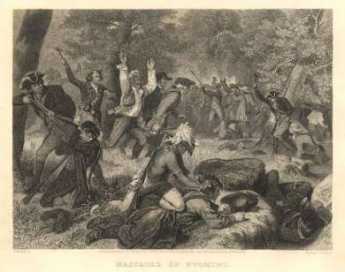
|
| The Wyoming Valley Massacre |
Things seemed peaceful in the Wyoming Valley for half a dozen years after the massacre, so Connecticut settlers slowly drifted back. This time, the people who didn't like poachers were the Proprietors of Pennsylvania. The Penn's were no longer Quakers, did not control the State Government, and in fact, were often in conflict with the Pennsylvania Quakers who had bought their land. They had to act as private citizens in their effort to expel the Connecticut poachers, which in this case meant calling Sheriff Jennings to evict them. Since everyone on the frontier in those days was armed and ready to fight, Jennings brought along a band of soldiers, led by Captain Amos Ogden.
On five different occasions, with escalating casualties, Jennings would arrest the settlers and take them before a judge in Easton, while Ogden stayed behind and burned the cabins and farm buildings to the ground, following which a somewhat larger group of Connecticut Yankees would return to the Wyoming Valley. By 1771, the Connecticut squatters had grown too numerous to be intimidated easily, and were militarily organized under an effective soldier, Zebulon Butler. Butler's men surrounded the handful of Pennsylvania soldiers in a fort under Ogden. At that point, Ogden briefly became a hero.
Seeing that reinforcements would be necessary, Ogden stripped naked, wrapped his clothes in a bundle around some sticks, and tied his hat on top. Tying a rope to the bundle, he floated down the river while the Connecticut sharpshooters peppered his hat with holes. Luckily, their aim was excellent, and Ogden escaped without being hit by a stray bullet. Off to Philadelphia for reinforcements.
Unfortunately, when Ogden and two hundred soldiers returned, Zebulon Butler ambushed them. In those days of honorable combat, Ogden was set free in recognition of his derringer-do, but only on the condition that he promised never to return. The Connecticut group was thus left in possession of the valley, and can fairly be said to have won the first war.
The Economic Power of Laws
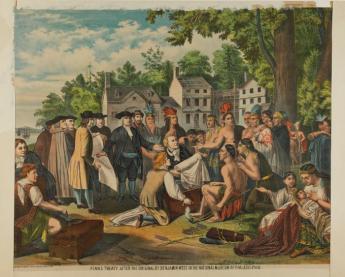
|
| William Penn Treaty |
Philadelphia is tucked down in the Southeast corner of Pennsylvania, right next to Delaware and New Jersey. All three states once belonged to William Penn and started out Quaker dominated. In time, they settled down to a life of independent states, and with the growth of population plus speed of transportation, they are all getting smudged together again. The Quaker influence is there if you look for it, and rather fierce, even hostile, political competition between the states is there, too. But if you were a foreign visitor who doesn't look at maps, you could drive around the metropolitan area without knowing which state you were in. To a large extent, the Rand-McNally lines are a hindrance to commerce and convenience, but they have their value. The quirks of political jurisdiction give the Philadelphia metropolitan area six U.S. senators, and the opportunity to take shrewd advantage of the three legal systems. You can buy things without a sales tax in Delaware, and estate tax lawyers tell me that if you must die, die in Delaware. At one time, New Jersey was a great place to get an uncontested divorce, Pennsylvania a better place to start an unincorporated business. More recently, the New Jersey doctors are complaining that malpractice rates are unbearable, but they are not as bad as they are in Pennsylvania, and it is rapidly becoming true that if you are going to be born, you will need to be born in New Jersey because the obstetricians have all moved there. That's also true in the District of Columbia; obstetrics has just about entirely fled to Virginia. Better watch out where you have your auto accidents, too. Neurosurgeons and orthopedists have also responded to the local disincentives to live near certain types of juries.
Long ago, James Madison designed things this way on purpose. The main author of our constitution hated taxes and oppressive government as much as any other founding father and argued it was a good thing to let neighboring states have differing laws. Corporations which do interstate business hate the complexity of course, but as Madison argued, people do shift their business, their businesses, and even their residence if the neighboring states become too extreme in their differences. It's still worth a thirty-minute drive to buy silverware and China in Delaware, and if you are driving to the New Jersey shore, you ought to fill up your gas tank on the Jersey side of the bridge. At one time, there was a thriving resort town in the Jersey woods, mostly entertaining people who needed a spell of New Jersey residence to be eligible for New Jersey divorces.
These things respond to local circumstances fairly rapidly. I once met a man from the Delaware Chamber of Commerce who boasted that the Chamber could get a Delaware law changed over a weekend if it had some particular commercial advantage. Governor du Pont saw the bigger advantages of this flexibility and got some laws enacted which drew most of the big credit card companies to Delaware, and at least a branch of all the big national banks. Delaware is starting to emulate Lichtenstein , and fairly successfully.
The effect on Philadelphia banking has been disastrous. Once the banking center of the whole continent, Philadelphia now does not have the headquarters of a single major bank. True, banking is becoming an obsolete industry whose products no one really wants, but the particularly severe effect in Philadelphia comes from the fact that if you were going to have a big bank in the metropolitan area, you would have it in Delaware.
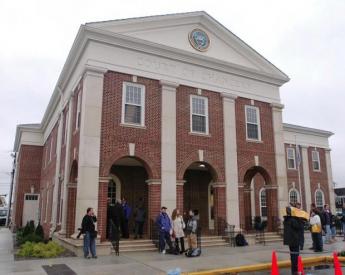
|
| Delaware Courts |
The location of so many corporate headquarters in the little state attracts lots of outside lawyers, of course, and it puts a heavy burden on Delaware Court of Chancery, the court for corporate disputes. The judges are appointed by the governor, and it doesn't take all that much outside money to lean on the governor, so the nation's giant corporations are at the mercy of a very small group of local politicians. The politicians, on the other hand, operate freely in an environment where comparatively few of their constituents have any interest in the goings-on of major corporations from far away.
It's an interesting thing that the legislatures of all three formerly Quaker states are torn with sectional disputes. In Pennsylvania and Delaware, it's the cities against the farmers. In New Jersey, it's the North versus the South. All states are having a hard time balancing their budgets in a recession, but somehow New Jersey has worse deficits than the others, and therefore more quarrels about taxes. The northern politicians dominate the legislature, and the south feels it is often the victim of state laws designed to help the North in its constant war with New York City. Ever since 9/11, the financial district of New York has been sending its subsidiary employees to safer cheaper regions. That might have meant going to New Jersey, but the tax flounderings there have led to many of those relocations going on a few miles to upstate Pennsylvania. You don't ordinarily think of Scranton as a financial center, but take another look. Madison, no doubt, would smile at the tendency, but wrinkle his brow at all the unintended consequences. At least, everyone in the region speaks English more or less, otherwise, the European Common Market could learn a lot from studying our local scene. About fifteen years ago, there was actually an unsuccessful provision on the ballot for South Jersey to secede.
The Decision of Trenton (1782) Under the Articles of Confederation
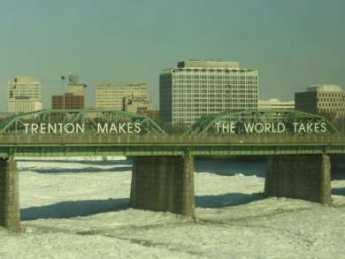
|
| Trenton Makes the World Takes |
AS the American Revolution drew to an end, the time arrived to settle the inter-state grievance of Pennsylvania and Connecticut over King Charles II's ambiguity about who owned Pennsylvania's Wyoming Valley, including the city of Wilkes-Barre. However, if they were all going to be United States citizens, it didn't matter much whether the residents of Wilkes-Barre (as it was now known) were governed by the laws of Connecticut or Pennsylvania. But bloody grievances die hard, and slowly. The genteel debates envisioned by the Articles of Confederation were not equal to settling blood feuds, but they tried. The two states selected judges to represent them, in a negotiated settlement which took place on neutral ground, Trenton, New Jersey. After protracted testimony and prolonged secret deliberation, the judges emerged with a very brief and unexplained decision: The Wyoming Valley belongs to Pennsylvania. Period.
Almost every scholar of this subject is convinced that the unwritten decision contained two other provisions. Connecticut was given a piece of Ohio, Western Reserve. And the Pennsylvania representatives privately assured the group that the Pennsylvania Legislature would in time recognize the land titles of the Connecticut settlers who were actually resident on Pennsylvania land. Unfortunately, it is hard if not impossible to enforce an agreement that is secret, and the Connecticut claim to Ohio was eventually eliminated, while the Pennsylvania promise to recognize the land titles of people whose ancestors killed our ancestors, was much delayed, watered down, and resented.
German Origins of the Philadelphia Orchestra

|
| academy of music |
The histories of the Academy of Music and the Philadelphia Orchestra are distinct but intertwined. At the moment, the Orchestra owns the Academy, but it was not always so. The Academy of Music of Philadelphia was built in 1857, but the Philadelphia Orchestra was not founded until 1900, just for instance.
It is undeniable however that Philadelphia orchestral music began its present direction with the German immigration wave of 1848, bringing with it the new musical concepts of Felix Mendelssohn. Except for the wedding march which has sent innumerable brides down the aisle, most people now have a little trouble naming a piece of music written by this composer, but in fact, he produced twenty to fifty pieces a year from 1820 to 1847. In terms of pure virtuosity, Mendelssohn was probably the most prolific and gifted composer after Mozart. His lack of really notable productions has sometimes been attributed to his wealthy childhood and too-easy success, but in his day he was nonetheless a musical revolutionary with an enormous following.
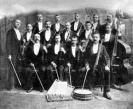
|
| Musicians |
One of the orchestras in the Mendelssohn tradition was the Germania Orchestra which moved to Philadelphia but had trouble getting accepted, and disbanded. The members of the orchestra scattered and eventually reformed a Philadelphia Germania Orchestra, which largely took over the place and some of the members of the disbanded Musical Fund Orchestra, struggled for a few years, became part of Henry G. Thunder's Orchestra, which in turn was almost entirely taken over by Fritz Scheel's Philadelphia Orchestra. Even with this thoroughly local name, the Orchestra struggled for a few years, and would quite likely have dissolved into still other formulations, until the local Women's Committee took matters in hand. Leadership was provided by Fanny Wister, sister of Owen Wister the novelist, and granddaughter of Fanny Kemble. From that time on, particularly from the day of the hiring of Leopold Stokowski as a conductor, the Philadelphia Orchestra has pressed forward, and never looked back.
Reviving the Mummers
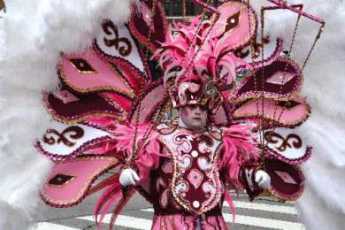
|
| Mummers |
There's a growing sense of alarm among loyalist Philadelphians that the Mummer's Parade may be in decline, possibly even in a fatal spiral of decline. Only 10,000 people participate in this folk ritual, while a few decades ago 25,000 people were participants of some sort. A great many people who don't participate, and don't attend, are having a lot to say about whose fault it is.
Much of the commentary is contradictory. The consensus among participants is that moving the parade from Broad to Market Streets, and then back again to Broad Street, somehow broke some vital strands of tradition. On the contrary, say some former viewers, the problem is that once you have seen the Mummers, you have seen them; there's no variety. If you take either argument seriously, you have to conclude that what seems appealing to the participants - continuity and stability - unfortunately turns off the spectators. If that's the situation it's hard to know how the parade ever got popular in the first place. So one or the other of these comments are wrong, maybe both are wrong. Unless both are right but insignificant, not the root of the issue.
Where everyone agrees is that the parade on New Year's Day is too doggone cold. Years ago the leaders tried to shift the parade to the Fourth of July, since in fact, it may have originally begun as an Independence Day celebration. What we now call "comics" were then called "shooters", because they carried and shot off guns. Since alcohol has always been an important attraction for these parades, it is easy to imagine the concern of the Quaker City about drunks lurching around the streets, firing real weapons. With the coming and going of Prohibition, sales of liquor on the street vanished, although there remains plenty of evidence it is still popular. On a political-social level somehow it is possible to sell beer at baseball games, whereas it is almost politically inconceivable to sell beer, or hot toddies, on Broad Street. No one could argue with a straight face that alcohol violates tradition.
As for that doggone cold, it isn't any colder today than it was when the Mummers parade was thronged, is it? Well, yes, it's a lot colder. Skyscrapers cast dark shadows at the end of short winter days. And tall buildings block the wind at their tops, with the wind then scooting down the side of the building to the sidewalk. That's the "Marilyn Monroe effect," and it's plenty real. So, it has to be noted that the parade migrated up from South Philadelphia to center city, at the same time center city became climatically inhospitable. To get a little technical, there's also the "sundown wind." As the shadow of nightfall moves from East to West, the warm air in the sunlit area rises up over the cold air in the darker region, creating a sundown wind. Add to this the early sunset of winter, throw the sundown wind against skyscrapers, and it's time to go home. To television.
It's my view that television, which I never watch, by the way, has a lot to answer for in the deterioration of the Mummers parade. If people who never watch the Mummers parade are allowed to criticize it, surely people who never watch television are also entitled to some surly comment. Back in the fifties and sixties, getting featured on television was a big thrill for the mummers. If the cameramen preferred performance in one place so they needn't move their equipment, their request was eagerly agreed to. There might even have been the prospect of big bucks since everyone knows show biz commands top dollar. Let 'em perform at City Hall, where the judges can keep warm on elevated benches, and politicians can accidentally walk in front of the cameras. But notice that all of the successors in the parade line are backed up from City Hall to Locust street, not performing for the sidewalks. And all of the performers, having strutted their stuff at City Hall will then disband, instead of continuing up to Vine Street, as they once did. It's no longer a parade, it's a performance at City Hall. For television, you might say, except that television has used up the material and is abandoning it.
For completeness, we should mention the bad luck of snow and rain for a few years in a row. And the discomfort with blackface, but the absence of black people. The absence of Jewish and Oriental brigades in an ethnic extravaganza deserves notice. You will occasionally see people at Philadelphia upper-crust dances showing off the Mummers Strut, but you aren't likely to see that on Chinese New Years. Whether newer ethnic groups were excluded from participation by the hard-core South Philadelphia Italian, Polish and Irish groups is not immediately obvious. In fact, it could well be the reverse, a sour-grapes rejection by the newer arrivals or their leaders. But all such sullen opinions are somehow unsatisfying, particularly when the parade retains such a noticeable tolerance for transvestite behavior.
My main suspect for the culprit of the parade's decline is television. It was sure a nice parade before that thing came along. The leaders of the mummers' parade must either find a way to cope with the monster or - fuhgeddaboutit.
Use the Internet for Your Club
Most clubs, family groups, or neighborhood associations are held together by one loyal volunteer who does all the work. This limits the scope of the club to what one person is able to do in spare time. When that central person gets tired of it or moves away, things tend to fall apart. In the spirit of encouraging more volunteerism, this article suggests some ways the home computer can easily automate the normal drudgery of running a club. Having just performed this task for the local computer society, I can report it takes about two hours to put it together. If I did it three times, it would take forty-five minutes. A rank beginner, who doesn't even know what the words mean, might take all day to do it, but no more than that.
Most of the programs a club would need were first developed for people on the go, like a salesman who visits several cities, or a college student who commutes. It's an easy step to imagine different club members in different places instead of one person in several places. Electricity travels so fast that connecting computers together over the whole world's Internet can be thought of as essentially creating one big computer. For practical purposes, it doesn't matter whether a piece of information is in two parts of one computer or in two different computers hooked together by the Internet. The whole process is so cheap it might just as well be free.

|
| The New Macintosh Mac Mini |
Selection of Computer and Operating System. Over ninety percent of the world's home computers are based on the Windows operating system, but Windows is having a lot of trouble right now with viruses and spam. Right now is Apple's big chance, because the Apple OS X operating system, based on Unix, seems to be immune to viruses and spam. So, if you are buying a new computer, I suggest you look at Apple's headless version. That's a little six-inch box to which you attach the monitor, keyboard, and printer that presumably you have left over from some Windows system. Times will change, but right now this five hundred dollar little headless job is worth the money. That's for the club secretary; all the club members can use any kind of machine they happen to have, at least for read-only use.
Router. If you have several computers on one telephone line, you need a router to send the right signals to each machine. Because the router changes the identification numbers every time it is restarted, it tends to foil the buccaneers out there who are trying to find your credit card. Therefore, it's not a bad idea to have a router attached, even if you only have it connected to a single computer. Security folks say it takes about fifteen minutes for some buccaneer to find a newly installed computer, and most banks get several hundred break-in attempts every hour. That's because everybody is getting automated these days, including criminals.
Choice of Browser. After you get set up and organized and all, you need to download the Fire fox browser, which right now is faster and more spam-proof than either Internet Explorer or Netscape. Go to some other browser and enter https://www.mozilla.org/products/firefox/. There's no harm in having several browsers sitting on your computer, including Opera if you like, but right now Firefox is the one to use. A browser, in case you care, is a program that takes a stream of Internet data and translates it into the image on your screen, sort of like translating Morse code into a telegram. Some browsers are lean, mean and fast, while others are loaded with a lot of bells and whistles that slow them down. If you can't see any difference by trying them, go with the one that gives you most spam protection.

|
| Yahoo Calendar |
Yahoo Calendar. There are lots of computer calendars, but right now Yahoo offers one that is somewhat better for public use by clubs. For an illustration, take a look at the Philadelphia Orchestra calendar that can be located on Philadelphia Reflections in the lower left column, by first clicking the Philadelphia Calendars button, and then clicking the link to the Orchestra's schedule. Naturally, the Orchestra doesn't want people changing their public schedule, so the calendar is read-only. You can create a calendar like this for your club or organization by going to www.calendar.yahoo.com and entering an identifier and password. You can only change the calendar if you have the password, so be careful who is allowed to have it. If you make a misjudgment about this, just abandon the calendar and start a new one. You can, of course, create a personal calendar for yourself; it would be nice to merge your calendar with organization calendars. Calendar-merge programs do exist but presently are a little primitive. Even nicer would be the ability to drag and drop individual events from one calendar to the other, but that's mostly on the wish list.
Yahoo Address Book. There are zillions of address books, but Yahoo provides a public one if you allow club members to know the password. On the one hand, it's a big convenience for the secretary to have everybody fill in his own data. It can take ten or fifteen minutes apiece to complete all that information. On the other hand, if just anybody can have all this data, you can expect to get lots of unwanted solicitations. Naturally, you want to keep intruders from altering the data, but whether or not you make your membership list public is your own decision. So, probably you want to transfer the data to a list that you keep private, using a system of letting people enter data, and then erasing it after it is transferred.
Listserv. A very handy tool is to create a listserv, which is a system of e-mail that is sent to everyone on the list, and everyone can chime in with comments. It makes for a lot of local excitement, and it keeps families together, including reunion classes from all the schools you went to, 'way back then. If the Rs and the Ds get to bashing each other on the Listserv, you will learn the value of designating some sober soul to be list master, given the power to exile people whose mouths get too noisy.
Minutes and History as Blogs. Most clubs keep minutes, and after a while, they start to record their history. It's a lot of work, and often gets lost; furthermore, it's hard for anyone but the author to read. We suggest you create a blog and hang it on the Internet.
While there are a dozen programs and systems for creating blogs (that's short for Web logs), Google has bought blogger.com from that company, and has pepped it up quite a lot. Like the rest of these ideas, this one is free, and there are several million of these in existence. Sometimes people write poetry in the form of blogs, and some other people put up some pretty raunchy pictures or commentary. Apparently, Google doesn't care, so they shouldn't mind if you publish the minutes of the East Whipswitch Cooking Society as blogs. It's very easy to do, and their canned templates produce some pretty elegant web sites in minutes. That's right, minutes in minutes.
Finances and Newsletters. Clubs typically collect dues or charge for luncheons, but financial stuff on the Internet is more complicated and must be dealt with in a later article. Similarly, you can publish a newsletter using RSS that is very spiffy indeed, but that's really hard to explain, and must be described in a separate article, too. Anyway, these preliminary items are enough to keep a new club busy for a few months.
Fast User Switching. Other operating systems will surely imitate it, but Apple is at present where you have to go to make a separate computer section for your club. Apple originally had the idea that several people would use the same machine, and want to keep their data secret from each other. So, they have a system in which you can click the upper right corner of the screen, and you can place yourself in a secret room with its own password. We suggest that it would be better to see this as a new desktop. All graphical interfaces of all computer operating systems use the metaphor of a desktop, which is what suggested to me that the club needs a desktop like my own. That is, it's littered with half-finished business of a dozen sorts, suddenly abandoned when the phone rings or a visitor arrives. You would like to be able to come back to your desktop and take up your work where you left off. For that, you probably need several desktops, and that's what fast user shifting provides you. Not vitally essential, but very convenient.
Favicons. Especially if you have fast user desktops specially designated by work topics instead of people, you can really use the favicon, or favorite icon, feature. A favicon is the little miniature do-hickey to the left of the webpage URL in the URL box. Maybe you never noticed it, but it's usually there. If you take your mouse and drag the favicon onto the desktop (you may have to shift something to create some blue sky desktop room) a new icon will appear on the desktop. Close up and click on that new icon, and you will open up a browser and go right to the page you were using when you created the icon. This is such a really neat feature that your desktop is apt to fill up quickly with a lot of web pages you happened to come across. It doesn't take long for the favicons to choke the desktop into uselessness, so this feature is at its best in a system where the topics of general utility to the user are sub-set by fast user switching.

|
|
Apache has the largest share of the market and is available for most computers. |
Your Own Website. Apache. Your club will soon get the idea that you need your own website, but in fact, you already have several of them. Your calendar, address book, club minutes blog, club history blog already add up to four websites. To most people, having their own website means consolidating all this material into one elegant page, with photos and artwork. You can do that, but it's much harder, and you first need to see if you really have a need for that. By far the easiest way for amateurs to have a website is to pay somebody a couple hundred dollars to write the code for it, and pay an Internet provider ten or twenty dollars a month to display it for you.
But for advanced players, like a club of computer professionals and particularly if that club runs a little on the snooty side and highly prizes its privacy, it might want to consider going all the way and becoming its own Internet provider. In that rather special case, it brings us back to Apple, since the OS X system includes a free copy of Apache, the program for running your own site on your own computer. Now, that's really a big undertaking, far beyond the average club. So if privacy of that order is mandatory, you may have to hire someone to set it up for you. But Apache sure makes it possible, if that's where you feel you want to go.
Your Own Newslettter. First, take a look at what you are trying to achieve, and a handy example would be https://www.yahoo.com/.

|
| Yahoo |
You will see it is not a daily or a weekly, it is continuous. The page of the newspaper is a montage of ten or twelve blocks on a page. For example, one block might display the month's schedule, another shows sports scores, another shows the stock market, etc. Each one of those blocks is probably updated at a different time, making this a continuous newsletter. Of course there is a way provided to individualize the blocks of space, change the color schemes, etc. Since this newsletter is on the Internet, anyone can read it from anywhere in the world, at any time. That is, they can read it if they know the password, which some clubs want to keep private, and others prefer to skip because it is a nuisance when people forget what the password is and call you up at home after midnight to ask for it.
What underlies this process is a technique known as RSS. Each block of space in the newspaper is operating on a different scheduling, and each blocks "polls" a donor site every so often, for example fifteen minutes. The polling program calls the URL of each donor site at a preset time, where a record is kept of the last time the site was modified. If the site has been changed since that last visit of the polling program, the new site is downloaded to the newsletter page. If there has been no change, the polling program simply goes on to the next-scheduled site. In effect, the polling program is acting as a "robot". Modifications of this system, with considerable elaboration, are at the heart of the Google robot and other robots for other purposes. Generally speaking, the ordinary user doesn't have to know how to construct one of these robots, or modify one. No doubt, there will be extensive elaboration of this concept in the near future, but that's essentially how you can construct a usable newsletter in short order.
www.Philadelphia-Reflections.com/blog/464.htm
The Franklin Inn
 Founded by S. Weir Mitchell as a literary society, this little club hidden on Camac Street has been the center of Philadelphia's literary life. 
|
Camac Street is a little alley running parallel to 12th and 13th Streets, and in their day the little houses there have had some pretty colorful occupants. The three blocks between Walnut and Pine Streets became known as the street of clubs, although during Prohibition they had related activities, and before that housed other adventuresome occupations. In a sense, this section of Camac Street is in the heart of the theater district, with the Forrest and Walnut Theaters around the corner on Walnut Street, and several other theaters plus the Academy of Music nearby on Broad Street. On the corner of Camac and Locust was once the Princeton Club, now an elegant French Restaurant, and just across Locust Street from it was once the Celebrity Club. The Celebrity club was once owned by the famous dancer Lillian Reis, about whom much has been written in a circumspect tone, because she once successfully sued the Saturday Evening Post for a million dollars for defaming her good name.
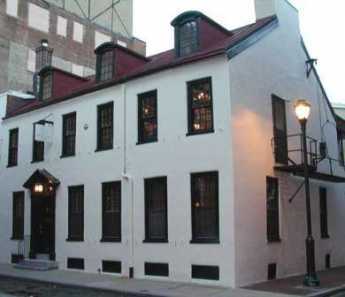
|
| The Franklin Inn |
Camac between Locust and Walnut is paved with wooden blocks instead of cobblestones because horses' hooves make less noise that way. The unpleasant fact of this usage is that horses tend to wet down the street, and in hot weather you know they have been there. Along this section of narrow street, where you can hardly notice it until you are right in front, is the Franklin Inn. The famous architect William Washburn has inspected the basement and bearing walls, and reports that the present Inn building is really a collection of several -- no more than six -- buildings. Inside, it looks like an 18th Century coffee house; most members would be pleased to hear the remark that it looks like Dr. Samuel Johnson's famous conversational club in London. The walls are covered with pictures of famous former members, a great many of the cartoon caricatures by other members. There are also hundreds or even thousands of books in glass bookcases. This is a literary society, over a century old, and its membership committee used to require a prospective member to offer one of his books for inspection, and now merely urges donations of books by the author-members. Since almost any Philadelphia writer of any stature was a member of this club, its library represents a collection of just about everything Philadelphia produced during the 20th Century. Ross & Perry, Publishers has brought out a book containing the entire catalog produced by David Holmes, bound in Ben Franklin's personal colors, which happen to be gold and maroon, just like the club tie.
The club was founded by S. Weir Mitchell, who lived and practiced Medicine nearby. Mitchell had a famous feud with Jefferson Medical College two blocks away, and that probably accounts for his writing a rule that books on medical topics were not acceptable offerings from a prospective member of the club. So there.
The club has daily lunch, with argument, at long tables, and weekly round table discussions with an invited speaker. Once a month there is an evening speaker at a club dinner, with the rule that the speaker must be a member of the club. Once a year, on Benjamin Franklin's birthday, the club holds an annual meeting and formal dinner. At that dinner, the custom has been for members to give toasts to three people, all doctors, including Dr. Franklin, Some sample toasts follow: THE Colonial disputes with Great Britain were settled in 1783, creating great opportunities for the Colonies to resume their disputes with each other. Because of the unfortunate earlier action of the Penn Proprietors in selling land already occupied by Connecticut settlers, the legislatures of Connecticut and Pennsylvania behaved in ways that do them no credit. The situation could easily have led to more armed conflict, and it could even have gone from local war to fragmentation of the nation. So, although New York was close enough to know better, they joined with Massachusetts in offering to consider carving a new state out of Pennsylvania's northeast corner. The proposal was rejected, but the geological idea remains. The northeast corner was once covered by glacier, and the region remains separated from the rest of Pennsylvania by a "terminal moraine", which is the huge pile of rocks and stones left behind after a glacier recedes. There are thirteen counties of rather desolate woods in this corner, with five or six more counties of moraine. Even today, some upper counties have only five or six thousand residents scattered in little settlements. The whole idea of creating a new state died when people got a chance to walk around and actually look at the region. Although one county is named Wyoming, this was not Wyoming, Fair Wyoming, at all; this was a pile of rocks. Moraines were what the Connecticut settlers were trying to escape. However, their grandchildren might be unsure. Tremendous deposits of anthracite were soon discovered in the region, and then oil in Bradford County. Present residents of New York City will apparently commute endlessly to escape taxes, so an interstate highway or two would probably quickly make the area into Little Brooklyn. The central point in all this was beginning to emerge. Since the Constitution was ratified, it simply no longer matters what state you were living in, as long as you can trust the legislature and the courts to be reasonably fair. These two combative legislatures and affiliated courts were once quite obviously behaving in a manner too obscenely partisan to be tolerated. Everybody involved in this mess could see the advantage offered by the ability to appeal to a superior power dominated by the other eleven (now, forty-nine) states. Carving out a separate state was not a compromise, at all. It was a threat, just as unsatisfactory to one combatant as the other. Although it was clearly time to put aside the grievances and vengeances of a land dispute which had got out of hand, currents of other wild and headstrong ideas continued to swirl into the northeastern corner of Pennsylvania. In April 1786 Ethan Allen himself showed up in this region, wearing full Regimental uniform. He declared he had formed one new state and that with one hundred of his Green Mountain Boys and two hundred riflemen, he could establish another one. There is some reason to suppose Allen was responding to an action of the Susquehanna Company of Connecticut, which had held a meeting the previous September where Oliver Wolcott drafted a constitution for a new state named Westmoreland. William Judd was to be governor, John Franklin lieutenant governor and Ethan Allen was to be in command of the militia. The Assemblies of both Connecticut and Pennsylvania immediately reacted with outrage to renounce the whole State of Westmoreland idea; when John Franklin persisted, he was dragged to Philadelphia and thrown into jail to calm his rebellious spirit. Nevertheless, the point was dramatized that -- even five years after the Decision of Trenton had supposedly settled the matter, and after all sensible neighbors urgently wanted this dispute terminated -- something else needed to be done to strengthen the Articles of Confederation, or preferably replace them entirely. Philadelphia had only 25,000 inhabitants during the Revolutionary War. Now, nearly that many British soldiers of Sir William Howe poured into town, victorious. Victorious, except for being cut off from their supplies on the warships in the Chesapeake. Men war soon sailed up the Delaware River but found the narrow channel between Fort Mifflin and Fort Mercer in New Jersey blocked by strange contraptions called chevaux-de-frise. These instruments consisted of heavy timbers sunk to the bottom of the river, containing massive iron prongs that reached almost to the surface but pointing downriver. They were effective blocks to wooden vessels, almost impossible to dislodge. The general arrangement was: Fort Mercer on the top of the New Jersey cliff called Red Bank (now National Park), overlooking the blockaded channel. On the other side of the ship channel, Fort Mifflin on an island. A second channel between Fort Mifflin's island and the Pennsylvania shore was quite shallow, allowing special American gun barges and galleys to come down and attack the larger British vessels, then to escape pursuit by fleeing upstream. The Americans had two years to perfect this defense, and it was formidable. Only one or two large sailing vessels could maneuver near it downriver, and at least the Pennsylvania side was difficult to attack across the mud flats. When Howe was earlier considering how to attack Philadelphia as he sailed Southward past the mouth of Delaware, he had decided it was hopeless for his fleet to attack this barrier if it was defended by an army, and the strategy evolved to defeat Washington, first. However, in the event, Washington's Army remained essentially intact after the conquest of the city, and from Valley Forge was able to interfere with supplies from the Chesapeake or lower Delaware Bay, but still send reinforcements to the river defense. The communication line on the Westside was essentially what is now the Blue Route, the third side of a triangle, from Conshohocken to Fort Mifflin, containing all of the British troops. The bend in Delaware made two sides of this triangle, and turbulence created by the river bend threw up mud islands which made the channel particularly narrow. These islands have since been filled in for the airport, the stadiums and the Naval yard, so the battleground is today, unfortunately, a little hard to make out, just as is also true of Bunker Hill, North Church, etc. in Boston Harbor. Four or five hundred Americans were in each of the two forts, and eventually, most of them were wiped out, at least half of them by starvation and exposure as much as cannon and musket fire. They had British on both sides of them, heavy guns bombarding them, under attack for weeks. The British kept at it because to fail meant the loss, by starvation and snipers, of almost the entire British expeditionary force in America. A contingent of Hessians under von Donop was sent to Haddonfield and down the King's Highway to attack Fort Mercer from the rear. In a moment famous in Haddonfield, a champion runner named Jonas Cattell sneaked out of the town and ran to Fort Mercer to tell the troops to turn their guns around for an attack from the rear but lie concealed behind the guns, while meanwhile the Quakers in the little town entertained the Hessians in a very friendly way. There was more to it than that, with some heavy fighting in the open, but von Donop and most of his troops were casualties. The fort had been made smaller in the past, unexpectedly presenting the attackers with a second set of fortifications after they surmounted the outer ones. Later on, a second assault by a different contingent of Hessians did level the Fort. If not, there would have been a third or a fourth assault, because a river passage simply had to be forced to relieve starving Philadelphia. Before the repeated assaults were over, Fort Mifflin had also been bombarded into rubble. But what really carried the day for the British was the late realization that if small Americans boats could sneak down the channel on the Pennsylvania side of Mifflin; then small British boats could go the other way, as well. Although the river blockage was eventually broken, it took six weeks after the battle of Germantown, and meanwhile, the heroic defense did a great deal to rally the sympathies of what had been considered maybe a loyalist city, and partly loyalist Colony of New Jersey. Before the winter was over, Howe had to go back to London to explain himself, being replaced by General Clinton, who was much less clever and much more provocative as a conqueror. The first two years had British control by a minority of hothead aristocrats. For the remaining five years of the war, the sobered British concept was no longer liberation of colonial Tories, but the subjugation of fanatic Rebels. The realization gradually spread, through both England and America, that the war had been lost, since Independence was a more sustainable situation for everyone than continuing endless efforts at subjugation. John B. Stetson started a hat factory in Philadelphia in 1865, and within a few years, The Stetson was synonymous with cowboy hats. The quality was good, and the image was perfect for the migration into the West which took place after the Civil War, urged onward by that myth of the noble cowhand so enthusiastically nurtured by Philadelphia authors, books and magazines. From time to time, a Stetson hat could be seen on a Philadelphia head, but for the most part, Stetsons were more a factor in Philadelphia commerce than Philadelphia styles. The matter came up recently when someone by that name was asked if he belonged to the hat family, and it turned out that was so. In one of those brief cocktail party encounters, he remarked that what ruined the Stetson hat factory, was John Kennedy appearing at his presidential inaugural -- hatless. Aside from the fact that young Kennedy's hatlessness did not seem to affect the Texas factory which still makes Stetsons, there is the recollection that hatlessness was pretty stylish fifteen years before the Washington Camelot, both in men and in women. In fact, hatless young women were a Philadelphia style for quite a while before they were a national style. It seems reminiscent of another fable about changing styles, attributed to Clark Gable. The movie star took off his shirt in a movie called "It Happened One Night", revealing bare skin. Undershirts, one is to believe, promptly disappeared from American life. There are those who recollect that undershirts suddenly got hard to find during World War II, and were replaced by T-shirts by the armed forces. There is a strong odor of Publicity Agent about both of these clothing stories, but things have got fairly advanced when even members of the manufacturing family are now repeating the folklore. We are indebted to Nicholas D'Alessandro, Jr.,Esq. for opening our eyes to the marvels of "1983 cases". That's lawyer slang for Section 1983, Chapter 21 (Civil Rights), Title 42 (The Public Health and Welfare) of the United States Code. In effect, we are talking about a Reconstruction-era law passed in 1871, to protect ex-slaves from persecution by local Southern governments, "acting under color of law". During the entire first century after its enactment, about 270 lawsuits had been brought under this seemingly unobjectionable law. Well, last year alone there were over 30,000 cases. The number has been steadily growing in the past twenty years, even though it is commonly believed Reconstruction is a best-forgotten episode in a tragic era of the past. Without significant objection, it is generally accepted that the main stimulus for 1983 cases is the recent (and extraordinary) feature of awarding full compensation for legal costs of the plaintiff. In other nuisance lawsuits, the contingent-fee system awards the lawyer a percentage (usually 33%) of the damages, making it unattractive to pursue minor cases. In a 1983 case, however, a trial lawyer could bill $350 an hour for many hours, while pursuing a case worth $100 in damages. A large proportion of these cases allege a local police officer deprived a citizen of his civil rights in the course of arresting him for a traffic violation. Taken in the aggregate, awarding billions of dollars in fines against local governments can be imagined to represent a punishment of local taxpayers for not reigning in their police officers. They represent a signal from the federal government that it believes local law enforcement is too vigorous in the pursuit of minor infractions and creates an incentive to be less so. Alumni of the Vietnam War protests and other civil disobedience are probably sympathetic if they ever find themselves on juries in such cases. In recent years, a growing source of 1983 cases have been related to local zoning laws and regulation. Many citizens claim they have been stripped of their property rights when forbidden to put a filling station in their front yard. Others darkly suspect local officials of taking secret bribes to re-sell the property to Wal-Mart, whenever government confronts the owner with taking his property by right of eminent domain. In cases like this, the sympathetic jurors are likely to be Jeffersonians, with a hunting rifle hanging above their fireplace. Such fiercely independent people, however, are given pause by knowing they must appeal the action of local officials to the federal government, acting under a federal law called Section 1983. The frustration must be intensified by learning the U.S. Supreme Court has declared it will not second-guess a local government by granting a writ of certiorari unless the action "offends our conscience". A careful search of the records of the Third Federal District (our own) fails to discover a single instance when that conscience was offended enough to intervene. But, wait. In 2005, the public flamed up. In keeping with past tradition, the Supreme Court again found its conscience was not offended by the exercise of eminent domain by the City of New London, Connecticut. New London is experiencing hard times, potentially made worse by the threatened closure of the nearby submarine base. Accordingly, it seemed in the public interest to condemn some small private properties in order to assemble a large parcel of land for commercial development. Libertarian groups took up the case of Ms. Kelo, a dispossessed small landholder, and carried it to the U. S. Supreme Court, who declared that the eminent domain didn't bother them. But Kelo v. City of New London did bother a lot of citizens all over the country. Even making allowance for the hostility to the eminent domain which has been growing for decades, and recognizing it is being stirred up by ideological groups, the Supreme Court still had crossed some sort of invisible line. What New London does with its waterfront is of small concern to the rest of the nation, but for the Supreme Court to declare it doesn't really care about such trifles is quite another matter. A man's home has always been referred to as his castle in this country, and title to a great many properties is only completely clear if you acknowledge the power of that gun on the mantelpiece. Add to that the recent extraordinary rise in real estate prices, and you might expect small property holders to be highly resistant to state takings. One must be sympathetic with the dilemma of the judiciary in trying to balance such intense attitudes with the general welfare of the community, particularly a community with floundering economics. But a Supreme Court that can't be bothered with trifles, that don't worry unless you light a fire under them -- had better expect to get fires lit under them. Fifty years ago,
only three American universities, Harvard, Yale and Princeton, were considered world-class. The benchmarks for them were Oxford and Cambridge Universities; both British universities had long history and great prestige. Making allowance for wartime disruption, it was also considered pretty classy to study at the Sorbonne, or Humboldt University in Berlin. Sweden, Vienna, Rome were right up there in prestige. By 2004, a London magazine was offering its view there were thirty American Universities better than anything in the European Community, in particular, Oxford and Cambridge. We'll pass over the Economist's anguished analysis of what's wrong in old Europe, and focus here on what American universities are doing right. They certainly do seem to be doing something right, but nevertheless, it's still possible to be uneasy about where they are going. For example, the top three all have more than ten billion dollars apiece in their endowment funds, and thus each perpetually generates roughly half a billion annually in disposable income from passive sources. You can accomplish a lot of worthwhile academic things with that much money. Operating revenue like student tuition, fees, research grants, and royalties should support normal running expenses, so endowment income is available for new frontiers of learning, research, and social endeavor. These well-run institutions unquestionably do accomplish many innovative and important advances, to the point where it is simply trivial to point out a few areas of waste or misjudgment. Multiplying their annual discretionary funds by thirty offers an overwhelming force for good in the nation, and in the world. The other twenty-seven premier research universities may not all have ten billion dollars apiece, but they have the Avis or we-try-harder motivation that may make up for it. The nation really does appreciate its worth. Applications for admission outnumber available places twenty to one, would be even greater if more people thought they had a chance to get in. Outstanding professors are in scant supply, commanding higher and higher salaries. In fact, a patient of mine who is a trust and estate lawyer tells me he gets a little uneasy about the growing number of university professors he sees with million dollar estates. A calm view would be that the nation recognizes the value of superior education, and is forcing the pace for a greater supply of it. Unless our economy experiences a disastrous decline, it is reasonable to expect a hundred universities to migrate up the quality chain in the next generation; most of those eligible for it are grimly determined to see it happen. China can make all the widgets it pleases, but that won't make them catch up with this champion competitor. The French can maybe make better wine, but unless they pep up their schools, they're going to have no shot at glory. Whew. That's intentionally laying it on thick because American academic triumphalism has a darker side to give one pause. In the first place, the arrogance of it shows. Even the European aristocrats, formerly world experts in flaunted put-downs, are irritated; and red America is really sore at blue America. Sprinkling a few research universities into Arkansas and Idaho might relieve regional divisiveness somewhat, but lasting social peace can only derive from starting in the third grade of, say, North Philadelphia, Kensington, and Norristown. In economic downturns, the country would have big trouble financing universal, bottom up, academic excellence. The tragedy is that money isn't the main problem in the science classes of the thirty research universities we already have; an alarming number of those seats are filled with foreign-born students, not even to mention the honors students. Secondly, the system is already under strain. The families of students are hard pressed by tuitions of fifty thousand dollars a year, and increasingly ready to complain about the inability, of classes of three hundred taught by non-tenured teachers, to justify to them such breath-taking fees. They may not understand educational financing, but they can count, and then multiply two numbers together. Faculty rewards favor research, not teaching, and teaching is what the students think they are paying for, their parents think they are sacrificing for. If what they are truly paying for are just credentials, they worry that affirmative action will cheapen the credentials. One clear sign of unease is the tendency of children from wealthy families to walk about the campus in torn overalls. This may be more than just a fad, it may be a sign they hope to hide from the university's system of redistributive taxation. Some people pay those high tuitions, but mostly tuitions are discounted for the eager family's ability to pay. Wearing blue jeans won't help, the universities demand to see the family's audited tax returns. In my presence, a university president remarked that the system was designed to extract the last dime from every student. The whole middle class is being asked to give until it hurts, for the unspoken goal of elevating a hundred more research universities to world class. Very few question the premise that unmatchable universities are the key to American world eminence. Quite a few, however, have anxiety that it may not work out for each individual. It may only be a lottery with slightly better odds. Now, let's get to the research part of the research university. In the past ten years, American universities have collectively received six or seven billion in commercial patent royalties; the aggregate now runs appreciably more than a billion dollars a year and it's growing. The normal arrangement is to give 20% of royalty income to the professor whose name is on the patent. Since most research is performed by large teams, it is possible to imagine considerable inequity and academic bad feeling in this system. In other walks of life, striving for a bigger share of two hundred million a year would cause differences of opinion about fairness. Here and there, you read articles by participants in this system who are concerned over the message it is sending to the students about personal values. Universities that began with a mission to educate the clergy are now seemingly overpraising the big payoffs. Many business analysts feel that a successful corporation needs to spend 10% of its revenues on research and development. Behind that is a realization that prices and profit margins are largest for new inventions, steadily declining as the new invention attracts competition and eventually becomes a mere commodity. The scientific term entropy is a perfect description of the way world economies seemingly work, like clocks gradually winding down. So businessmen get rid of old products and look for new ones, and the universities are the source of most new ideas and products. Put every last cent into R & D for new products, while the developing countries grind out widgets. If we eventually graduate hundreds of thousands of Americans from unmatchably excellent research universities, the outcome will take care of itself. Even flying airplanes into our tall buildings can't make much difference in this academic arms race. It's essentially how Ronald Reagan defeated the Soviet Union, and it's discouragingly difficult to argue it is totally wrong. However, you can imagine ways that it might all fall apart. The source of at least half the capital now pouring into the research universities comes from the federal government, particularly the National Institutes of Health, the National Science Foundation and the Department of Defense. It only takes fifty-one votes in the U.S. Senate to change that suddenly, for reasons of national defense, to defend the value of the dollar, to combat inflation, or lots of other reasons. Even now, universities often face annual crises at the end of a funding cycle, when projects have been awarded, people hired, but funding is delayed for uncertain periods of time because of distant political wrangles within the budget process. That's known as a cash flow problem, and even it is trivial compared with what would happen if federal research funding were delayed a full year. Just look at any university and see all the big tall buildings. They have largely been built to house research activity, and the university would have big difficulty selling them if they were empty. They've usually been paid for with mortgages, and it costs a lot of money to heat, air condition, clean and repair them. Just cut off the cash flow long enough, and you will see how risky it was to get into the research arms race. In 1951, Albert C. Barnes' legacy included
Jerome's Epistle to Paulinus from the Gutenberg Bible education centered on a notable collection of illustrative artworks, housed in a museum of his own general design for the purpose. He
left a multi-million dollar endowment to support his rather detailed and, in the opinion of many, somewhat eccentric intentions. It was his money, however, so his word was final. The institution was fairly mature, having previously been in operation under his direct control for twenty-five years. Since the Foundation trustees are now before the Orphans Court
pleading for permission to modify Dr. Barnes' instructions in order to
avoid financial collapse, skepticism is inevitable. Obviously, the
successor trustees must explain their expenses. But quite a plausible
case can be made that the true cause of this disaster is inherent in
the huge windfall growth in value of the paintings. In short, growth in value
of the fine art may have outstripped the growth of the resources set
aside for maintenance. Let's make a benchmark of
the Gutenberg
Bible, where incomplete copies are currently selling for $100,000 a
page and complete copies are estimated to be worth $100 million
apiece. Dealers maintain the Gutenberg is increasing in value at 20% a
year, but growth seems closer to 9% a year if you go back to 1951.
What's really relevant here is the growth in cost to ensure, protect,
dehumidify, display and make it available to scholars, if not the
public. It seems safe to guess these maintenance costs have grown more
rapidly than the investment growth of the endowment, which is surely
closer to 4% than 20%. The
imbalance is even greater if you remember that some investment income
is spent every year, while the worth of the fine art just grows and
grows. Regardless of the true numbers, if the cost of
maintaining the art does grow even
slightly faster than the endowment, the
dilemma the Barnes is now facing will eventually face any museum. New sources of
revenue, either from the government or from public admissions,
eventually becomes necessary if the priceless art remains on
display. It is
displaying these things that cost money; burying them under an Aztec
mound or a German salt mine shelters them from the problem. In the case
of Alfred Barnes, it is not completely certain that he wanted them
displayed. There is also the issue
of quirky fluctuations in the market for fine art. The 22 known
perfect copies
of Gutenberg, Bibles have been around for almost five hundred years, and it is safe to say their value is enduring. The 180 paintings by Renoir now owned by the Barnes may prove to be Gutenberg Bibles or they may prove to be a passing fad, but it is pretty hard to believe that one of them will always be worth two Gutenbergs. Since there is a pretty fair chance that we are currently seeing a value bubble in French Impressionist painting, it is questionably prudent to shipwreck the whole Barnes Foundation, the School, or Albert C. Barnes basic intent, by resisting the sale of even one of the more overpriced examples in the collection at the top of the market. That's one side of it. Another consideration is that Barnes himself did considerable merger negotiation with other museums, and may have been unexpectedly killed in an auto accident before he turned over all his cards in that particular poker game. It's asking a lot of the poor judge to overturn the clear and largely unmistakable language of Barnes will in favor of theories about what Barnes was really really thinking when he wrote it. If the judge is feeling adventurous, it's probably more satisfying to all parties if he sets forth a new legal doctrine, reflecting the inevitable disparity between the cost of displaying fine art to the public, and providing a perpetual endowment to do so. Republican Presidential Convention of 1900 was held across the street from what is now Children's Hospital at 34th and Spruce Streets. Although the re-nomination of an incumbent President (McKinley) is always a boring, foregone conclusion, the Vice-Presidential nomination, in this case, was a hilarious circus.
Boss Platt of New York hated Governor Teddy Roosevelt and wanted him out of Albany. So he persuaded Boss Matthew Quay of Pennsylvania to engineer Roosevelt's nomination as Vice President, which Quay did by threatening to deprive the Southern states of half their seats at the next convention, then relenting when they agreed to vote for Roosevelt. This was highly displeasing to Boss Mark Hanna of Ohio, the National Chairman, who didn't like Roosevelt and hated even worse to be beaten on any issue. It looked like Roosevelt was going to win, except for one thing. Roosevelt didn't want the job, which is a notorious political dead end. In the event, after much scheming and rumoring, Roosevelt was the unanimous choice of the convention, except for one vote. He voted against himself. The Convention presented two other ironies. The first was that everybody had it all wrong. McKinley was assassinated, and Roosevelt became President. Everyone involved would surely have voted the other way if it had been known what would happen. The other irony was contained in a large electric sign on Broad Street during the convention. Two thousand light bulbs, quite a novelty for the time, displayed in large letters: THE PHILADELPHIA INQUIRER. MORE REPUBLICAN READERS THAN ANY PAPER IN THE COUNTRY. There were no Republican National Conventions in Philadelphia between 1856 and 1872, but during this period the town became solidly Republican, and federal political patronage had its biggest impact on the region's economy. Pennsylvania threw the nomination to Lincoln in 1860, and Lincoln paid us back. The 1860 Convention was held on Wacker Street in Chicago, in a building called the Wigwam. Abraham Lincoln was the favorite son on Illinois, and so his cronies had considerable influence on the convention arrangements. They used this influence, for instance, to counterfeit several hundred tickets of admission to the galleries. The strong favorite to win the nomination was Mr. Seward of New York, and it is fair to say he confidently expected to win. The galleries roared with applause and shouts of approval of any mention of New York, or Seward. On balloting day, the Seward supporters went out into the streets with a joyous noisy parade, which greatly stirred their fervor. However, when they returned to the Wigwam, they found their seats taken by the Illinois supporters of Abraham Lincoln. From that point forward, all mentions of Lincoln, Illinois, or the Great City of Chicago were greeted with thunderous applause and acclamations by the audience. On the first ballot, as expected, Seward was in the lead,173 votes to Lincoln's 102, followed by about fifty votes each for Simon Cameron (of Pennsylvania), Salmon Chase of Ohio, and Edward Bates of Missouri. Since everyone knows that Lincoln eventually won, we can now look forward to Lincoln's cabinet, which was to contain William Seward as Secretary of State, Bates as Attorney General, Chase as Secretary of the Treasury, and -- Simon Cameron of Pennsylvania as Secretary of War. The Pennsylvania delegates from Bucks and Chester Counties were than the rest of the state, and privately regarded their favorite son Cameron, as a crook. Having dutifully voted for their favorite son on the first ballot, the Pennsylvania delegation was then free to make deals. As the roll call of the second ballot moved down the line, there was not much changing of votes. The people in the galleries were shouting away as usual, but the delegates were carefully marking their lists with stubby pencils. When the vote came to Pennsylvania, the insiders were electrified with the realization it was all over. Pennsylvania threw essentially all its votes to Lincoln. Ohio and Missouri immediately got the message and stumbled along to climb on the bandwagon. Lincoln was in. Historians have frequently noted the unexpected upset had a disproportionate effect on Southern opinion -- after all, scarcely any Southern candidates made it even to the first ballot, and no Southern boss was anywhere near the smoke-filled rooms where the leadership settled things while the ordinary delegates were out at parties. Furthermore, it was an anti-slavery sentiment that made Pennsylvania switch. But somewhat less noted is that the highly political new President soon got a hard-minded new Secretary of War. Cameron wanted, and got, lots of factories to make boots and uniforms, guns and gunpowder, Army depots, Naval Bases -- and so on, and so forth. The Pennsylvania Republican machine was in business for decades to come. Plaintiff lawyers, responding to increasingly effective attacks by the medical profession, retort the best way to avoid malpractice suits is to avoid committing malpractice in the first place. That's more jibe than a serious argument. But if it seriously intends the implication that increased volumes of medical malpractice cases signify increased levels of incompetence, that is unlikely to be true. Medical school applications have become almost incredibly selective for talent (sometimes reaching a level of 12,000 applicants for 200 places), the duration of postgraduate medical training is regularly protracted by several years after the four years of medical school, and legislation is actually being considered to compel these over-achieving trainees to work shorter hours so there can be no legitimate excuses for performance that isn't absolutely tip-top. It seems much more likely that this intensely competitive training environment has pushed medical standards to overly exacting levels of constant self-criticism, which is cited by censorious expert witnesses to imply that only a scoundrel would fail to measure up. In fact, most of the problems grow out of the snide comments of economic competitors, advertising their differing positions in the chain of information transfer. As far as net effectiveness is concerned, the basic goal for medical care is to prolong human life. Whatever the medical profession has been doing during this alleged epidemic of negligence, people are apparently living longer in spite of it. In 1900, life expectancy at birth in retrospect was forty-seven years. In 2005, it is predicted to be seventy-seven years for infants born today, a gain of thirty years in a century. So to speak, the average person annually lived 16 months when predicted at birth to live only 12, and kept it up every year for a lifetime. During no other century has that ever been true. Despite an alleged malpractice epidemic, remember, allegedly getting worse every year. So the medical profession takes offense at the surge in malpractice lawsuits, which we feel are unwarranted and ungracious. Congress and the public also need to see that rousing a respected profession to offended self-pity makes it much more difficult for leaders of the medical and legal professions to work together for dispute resolution, continuing quality improvement and effective peer review. The leadership of the medical profession has come to feel that the leadership of the legal profession has neglected its own self-policing duty. In almost every state every year, the number of lawyers disbarred is many fewer than the number of physicians losing their licenses. To imply that the standards for admission to Medicine are lower than the standards of admission to law school is not a statement supported by evidence. Nor is there evidence that self-policing by a conscience-driven profession is less effective than persecution by those who are paid to be censorious. Some research institution is challenged to examine a view widely held by the physician community: the graduates of mainly low-ranked law schools are chiefly responsible for attacking the performance of graduates of the highest-ranking medical schools, so class warfare also infiltrates this issue. These are all perhaps unhelpful rejoinders, and the risk of their further escalation is itself major justification for shifting priority from long-term reform, toward quickly cooling things off. While it is possible to see traces of the origin of insurance all the way back to ancient Mesopotamia, insurance of a currently recognizable form began around 1500, with maritime insurance creating risk pools for ships at sea. Eventually, insuring the life of a ship and ensuring the life of a person did not seem greatly different in principle; sooner or later everyone dies, but in those days sooner or later most ships sank. From the records of such pooling efforts, we can see that a sailor in colonial times had a 40% chance of not returning from a typical voyage. Learning this, some of the plots of Shakespeare's Merchant of Venice becomes more understandable, and the enormous wealth of successful sea captains, privateers, whalers and ship owners seems more justified by the risks they were taking. In retrospect, it seems hard to understand why anyone at all went to sea, thus why it took so long to discover America. Selling maritime insurance was a way to gamble on these risks. You might not get wet, but you were still taking big risks with your money. Life insurance was a comparatively late arrival on the insurance scene and grew out of the experience with maritime risk pooling. The first life insurance company was the Presbyterian Ministers Fund, a Philadelphia institution if there ever was one. In essence, the church had undertaken to support the widows of ministers. Insurance tailored to the life of each minister, when pooled together, approximated the church's collective widow-support risk. Only ministers were insured by this fund, however. The Insurance Company of North America (now Cigna) seems to have been the first company to sell life insurance to all comers. That's definitely an improvement; limiting the risks to a particular occupation amounts to "adverse risk de-selection", unintentionally excluding, for example, women and blacks. On the other hand, the concept was totally new; no insurance at all would have been attempted if it had been initially impossible to limit the risk. Insurance has since spread to many other topics, but it remains true that life insurance has one central unique feature. It is absolutely certain the customer will die, the policy will be cashed in. The uncertainty is when it will happen. After a while, it became evident that premiums would be collected until the final date, and could be invested until it happens. When the pool of customers gets large enough, there is almost perfect predictability about the average age at death, so the bigger the company the safer it should be. There is one great potential weakness in this system, lying in the fact that the person who buys the policy and receives the assurances will not be around to complain about failures of those assurances at the time the policy is cashed in. It takes many years before public trust in such promises overcomes skepticism. The growth of life insurance was therefore slow until the Civil War suddenly demonstrated there were unpredictable risks around. Unfortunately, abuses of the system by fly-by-night companies in the last half of the Nineteenth Century led to heavy government regulation of the industry. Philadelphia's reputation for integrity rapidly expanded its dominance of insurance, but could not prevent the heavy hand of regulation from holding it down, or local taxes from driving it into other jurisdictions. State Insurance commissioners were originally charged with guarding against an insurance company going bankrupt by using unrealistic low prices to attract business. The public interest was redefined to mean low premiums, by the obscure but effective method of legally shifting the debts of a bankrupt insurer onto its surviving competitors -- neither the public nor the Legislature had to worry about it any further. In the insurance capital of the country, stockholder returns and executive salaries gradually went from too fat to too thin. Insurance companies, one by one, moved to other states or at least to other counties. It is now possible to wander through the abandoned executive suites on the top floors of the former insurance palaces and feel as though you were at Luxor, wandering through the abandoned Egyptian temples of Karnak. To be fair about it, it is also possible to have a real estate agent take you through the former estates of life insurance entrepreneurs whose business practices amply justified some regulatory over-reaction. Plenty of old retired lawyers will be glad to tell you of the times they wrote new insurance laws for their insurance client, who just forwarded them to Harrisburg for enactment -- before the Second World War. But the destruction of this industry does no one any good, and it is surely fair to argue that excessive profits were the lesser of the two evils. Setting the regulatory risk to one side, the life expectancy of Americans has dramatically lengthened in the past century, nearly eight years in the past fifty years. Such unpredictable reduction of risk ought to lead to increased profitability for the insurer, but it also leads the public to shift to less profitable term insurance. The young buyer can see a period of several decades of dependent children, followed by a long period of life when the death of the breadwinner is less tragic. I needed, living too long becomes a modern new concern, the outliving of accumulated savings. When the investment manager of the insurance e company is faced with a choice of more investment safety or greater investment return, he must produce a combination of both, an impossible assignment. And so, insurance business drops off as clients wander away toward more glowing promises, or at least toward promises unconstrained by the growls of a consumer-driven insurance commissioner. During the Great Depression of the 1930s, only two life insurance companies went bankrupt, so at least the old way of running these companies produced safety. The 1930s now seem a long time ago. Nations at war traditionally vilify the leader of the enemy, and so Sir William Howe has usually been portrayed as a lazy, illegitimate uncle of the King, a womanizer lacking in military savvy, and a former parliamentary member of the minority party supporting peace with the colonies. But to go on this way is quite unfair to Washington, who outfoxed and out-generaled a tough and very clever soldier who was by no means a pushover, and who fought hard to win. In retrospect, it can be seen that Howe's army was crammed into winter quarters on the Perth Amboy-New Brunswick bluff across the river from Staten Island in the winter of 1777, following the defeat at Trenton. Washington's troops were meanwhile in a fairly impregnable position around Morristown. If Howe went back along the Raritan toward Trenton and Philadelphia, he could expect to be butchered by snipers behind trees. If he embarked on his ships, he would be vulnerable during the two days of so required to break camp and load the ships. Washington's problem was actually just as bad. He had no way of knowing whether he had to defend against an encircling movement at Morristown, against a renewed invasion toward Trenton and Philadelphia, or against a quick movement at sea by the battleships. If Howe embarked, he might be going to Albany to rescue Burgoyne, or to Fort Lee to encircle Morristown, or to Philadelphia, or even to Charlestown. Anyone of these choices would mean that Washington would have to hurry overland to catch him. It now seems clear that Howe had decided it was safe to abandon Burgoyne. He might have tried to capture Philadelphia and get back to Albany by September, but evidently, this seemed too ambitious and fraught with unexpected accidents, as events later proved to be true. Clear and unambiguous orders by Lord Germain in London were mislaid and never reached him. By implication, he was being told to use his best judgment. So he decided on a double option. He would send sorties out in all directions to keep Washington guessing and to entice him to come down from his mountain fastness into a pitched battle with British regulars. Failing that, he would get on his ships and take Philadelphia. Furthermore, Howe never told another soul what his plans were, except by sending a spy with misleading plans sewed into his coat, intending for him to be captured by the rebels. Washington, however, essentially refused to budge. Finally, Howe ordered an embarkation onto his ships, and actually loaded a contingent of Hessians on board. Although Washington was mistrustful of a trick, his officers persuaded him to attack the "vulnerable" British while they were loading onto the transports. As soon as Howe heard of Washington's movement he immediately issued orders to turn the whole army around and trap Washington. He thought he now had his chance to catch and destroy the Continental army. As things turned out, it didn't work and Washington escaped with most of his troops. Fearful of another such trap, he then held back perhaps too long and helplessly watched the ships load, weigh anchor, and sail out to sea. Where were they going? Not another person on the British (or Loyalist) side knew the answer, and the ships were far out to sea, invisible before they turned in whatever direction they were going. Was it North, or South? A week later, word came to Washington that the fleet had been sighted off the mouth of Delaware. It was time to move South, in a big hurry, on foot. Howe was going to go to Norfolk, but it wasn't even certain whether he was coming back up the Chesapeake, or going still further South to Charleston. It remained conceivable that he would wait for Washington to move his troops South, then double back to New York and Albany to Join Burgoyne. As we now know, Howe did turn up the Chesapeake to land in the rear of Philadelphia. And then Washington also guessed right and lined up his troops at Chadds Ford of the Brandywine Creek. Both of them were shrewd and very quick. Howe had won a major victory with superior resources. But as we shall see, Washington wasn't through with him. REFERENCES Helen of Troy had launched a thousand ships. Lord Howe only launched four hundred and thirty, but they were bigger. It is estimated a thousand oak trees were cut down to build just one man o' war. To repeat what happened next, this flotilla was parked in lower New York harbor while forty thousand redcoats conquered Brooklyn Heights, Manhattan, Washington Heights, Perth Amboy, New Brunswick, Princeton, Trenton -- and then Washington promptly made fools of Howe and Cornwallis, at Trenton, Princeton, New Brunswick. Howe, and Cornwallis, in particular, were raging mad. The first year of the two-year siege of Philadelphia was over, and at half-time, the British team was popped up. The grand plan laid out in London by Lord Germaine was for Howe to capture New York, and maybe Philadelphia if it would be useful, while Gentleman Johnny Burgoyne took an army from Canada along that giant cleft in the earth which starts at the St. Lawrence River, down Lake Champlain, then down the Hudson from Albany to New York. The Hudson is very wide, and the British Navy would have no trouble sailing upriver to Albany, landing an army to meet Burgoyne coming south, with the effect of cutting New England off from the rest of the Colonies. Burgoyne got his orders in London shortly after Howe's January disaster in Trenton arrived in Quebec in May and started on his campaign June 20. Nothing dilatory about him. Howe, however, had six months to get to Albany before that, and several months more before Burgoyne would get to Saratoga, tromping through the woods and black flies. From Staten Island, it might have taken Howe ten days to sail to Albany in plenty of time. Instead of that, Howe solitary and without advice, decided to take Philadelphia. Although the British never dwelt much on the fine points, the actual rebellion was only taking place in New England at the time the fleet set sail. It was the arrival of the fleet which triggered the Declaration of Independence, not the other way around. Lord Howe therefore probably felt some justification in revising the agreed plans and orders under which he set sail. As has been described already, the initial foray to Trenton ended embarrassingly. So, the capture of the enemy capital would now help people forget Princeton, and it would be sweet to whip Washington. Unfortunately, they wasted a lot of time doing it. Finding Delaware too well fortified, and almost as snaggy as Henry Hudson had found it more than a century earlier, he sailed all the way to Norfolk, came up the Chesapeake and landed at the head of Elk, and marched for Philadelphia. The Brandywine Valley has deep sharp cliffs off to the right, so Cornwallis was sent off to the left as a flanker past Dilworthtown while Howe attacked Washington head on at Chadd's Ford. It was to be the largest battle of the whole Revolutionary War. When Washington found himself facing encirclement, he had to order a withdrawal. To skip a few events now memorable to the Main Line suburbs, Philadelphia was essentially then occupied without a further fight, with the British set up their defenses at Germantown, seven miles from the center of town. Three weeks later, Washington attacked Germantown in a three-pronged assault that mainly failed because two of his formations attacked each other in the fog. That was October 4, 1777. The news soon reached them that Burgoyne had surrendered the other British army --starving in the woods -- at Saratoga, New York on October 17. Howe had in effect abandoned Burgoyne in order to take Philadelphia, but it was probably as much a result of getting drawn into a tangle, as a single decision to disregard the grand plan. In retrospect, it was quite a bad choice. All the world -- and the King of France in particular -- could see that Washington had beaten Howe at Trenton and then Gates and Benedict Arnold had soon beaten Burgoyne at Saratoga. General Gates, of course, was in charge at Saratoga, but Arnold was the flamboyant hero. Adding to his earlier exploits in Quebec and later providing the captured cannon of Ticonderoga for General Knox to drag over the mountains to Boston, thereby allowing Washington to drive the British fleet to safer distances, Arnold now essentially won two more battles at Saratoga. The first was to defeat Leger, who had been sent down Lake Ontario to come back up the Mohawk Valley to Albany. Then, turning his troops through the woods, Arnold joined Gates at Saratoga and defiantly led the charge that smashed the British line, when Gates would have been satisfied with containment. Arnold, like Alexander Hamilton, was a flamboyant man after Washington's heart. Meanwhile, Howe settled down to enjoy winter at Philadelphia. His court jester and chief entertainer were Major Andre, who took wicked pleasure in using Ben Franklin's Market Street home as his own. There was additional satisfaction in knowing that Washington was freezing at Valley Forge. The 8th President of the United States, Martin van Buren, was born in Kinderhook, New York along the Hudson. He was known as "Old Kinderhook", so in time he initialed his documents "OK",
and that's how that slang term originated. It's also of note that his
retirement home in Kinderhook was named Lindenwald, although any
connection with the terminus of the PATCO high-speed line is unclear.
His real claim to fame is that he sort of invented what we know as the
a modern political system, particularly that unfortunate doctrine known
as the "spoils system".
The full allusion is "to the victor belongs the spoils". The two-party
a system, the Democratic Party, spinning, log-rolling, and other clever
manipulations were of his devising. He must have been pretty shrewd,
having defeated De Witt Clinton
for Governor of New York, when Clinton was known as one of the most
ruthlessly ambitious politicians around. Recognizing he was unlikely to
be elected President, van Buren took on Andrew Jackson
the war hero and manipulated him into the presidency, with the clear
understanding that when Jackson stepped down, van Buren would have the
job, next. Van Buren was a cabinet officer during Jackson's first term and Vice President during the second term. During that time, he was the
real power running things from the shadows. He ruined the careers of John Calhoun and Henry Clay,
regularly taking both sides of a number of disputes over the extension
of slavery into new Western territories. What people ultimately thought
of all this may be judged from the fact that he ran unsuccessfully for
re-election -- three times. It is therefore not certain just whose ideas were in operation when
Jackson blocked the re-chartering of Biddle's bank, but one main
benefit, "cui bono?", went to New York. Wall Street had sold stocks
under a Buttonwood tree for fifty years, but its real start in the
the financial world can be traced from Jackson's action. The Industrial Revolution and the expansions of the United States by the Louisiana Purchase,
the annexation of Texas and the Mexican acquisition caused an
an explosion of new wealth, and hence an urgent need to make some better
financial alignment of three asset classes: land, precious metals, and
currency. Everywhere and at all times it is arguably what
the land is really worth; 19th Century America it was particularly
speculative, because there was so much of it. Most of the many bank waves of panic during that century can be traced to excessive borrowing to speculate in raw land. When Jackson closed Biddle's reserve bank, the land
the speculating public was ecstatic because of any constraints on the lending
power of banks made it harder to sell real estate. But what had been
done was to eliminate the only reasonably effective way of matching the
a true wealth of the country with its circulating monetary assets, and
after a brief boom, the almost certain consequence was going to be a
national bank panic. It came in 1837, during the first year of Martin
van Buren Presidency. The only imaginable alternative to a market-based monetary system is
a government-based one. Van Buren's political behavior was by almost by itself
sufficient warning of the danger of allowing politics into this matter.
For nearly a century, one warning was enough. The American colonies were growing too big, too fast, and the British Empire had too many international distractions, to have smooth relationships across three thousand miles of ocean, using uncertain communications available in the late Eighteenth century. Friction and misunderstanding were inevitable without far more statesmanship than either side thought was necessary. So, when the Continental Congress dispatched George Washington to Boston with troops to defend rebellious Massachusetts at Lexington, Concord, and Bunker Hill, it was hard for the British to believe the colonists were merely helping out one of their distressed neighbors. It seemed in London that the thirteen colonies had united, formed not only an army but a government, and gone to war. In December 1775 England passed the Prohibitory Act, essentially declaring war, and organized a huge invasion fleet to put down the rebellion. It now seems hard to understand the first notice the Americans had of this huge over-reaction was a private letter to Robert Morris from one of his agents in March 1776; no warnings, no negotiations, no attempt to investigate problems and correct them. The British just sent a fleet to settle this problem, whatever it was. It's all very well to say the Americans should have known they were playing with fire. They didn't see it that way; they were being self-reliant, responding to attack. In June 1776
British patrol frigates were skirmishing in the Delaware River; late in the month, British troops landed on Staten Island. The American reaction to all this was a muddle of confusion. A few were delighted, most of the rest were amazed or appalled.
Although the deeper strategic origins of the American Revolution are subtle, complex, and controversial, there is far less muddle about what happened on July 2, 1776, publicly proclaimed two days later. Adopting a resolution written by Richard Henry Lee of Virginia, the Thirteen Colonies stated they had now clarified their goals in the controversy with the British monarchy. For a year before that, the Continental Congress had been corresponding with each other and meeting in Carpenters Hall with the goal of achieving representation in the British parliament -- "No taxation without representation". The model for most of them was based on the Whig agitation for Ireland -- for a local parliament within a larger commonwealth. But the passing of the British Navy in Halifax, Nova Scotia, and then the actual appearance of seven hundred British warships in American waters showed that not only was Parliamentary representation out of the question, but King George III was going to play rough with upstarts. The new goal was no longer just representation, it was independence. If we were going to resist a military occupation at the risk of being hanged as traitors, we might as well do it for something substantial. The meeting had a number of Scotch-Irish Princeton graduates, whose basic loyalty to England had long been divided. Pacifist Pennsylvania, chief among the wavering hold-outs, was mostly won over by its own Benjamin Franklin, who was optimistic the French would help us. Even so, both Robert Morris and John Dickinson refused to sign the Declaration; Franklin persuaded both to abstain by absence, which created a majority of the Pennsylvania delegation in favor. That's a pretty slim majority for a crucial decision. Franklin was soon dispatched back to Paris to make an alliance; Washington was dispatched to hold off that British army in the meantime. Jefferson was designated to write a proclamation, which even after editing is still pretty unreadable beyond the first couple of sentences. Meeting adjourned. This brief account may not qualify as a serious examination of the causes of the American Revolution, but it comes close to the way it seemed to the colonist in the street. The rebels then spent eight years convincing the British they were serious and have been independent ever since. But, just a minute, here. Reflect on the fact that fighting had been going on for a year in Massachusetts, and that Lord Howe's fleet had set sail a month before the Declaration, actually landing on Staten Island at just about the same time as the Fourth of July. Add the fact that only John Hancock actually signed the document on July 4th, and some of the signers even waited until September. You can sort of see why John Adams never got over the idea that Thomas Jefferson had a big nerve implying the whole Revolution was his idea. What's more, there's a viewpoint that New England subsequently had to endure a President from Virginia for thirty-two of the first thirty-six years of the new nation because loud talk from New England still made the rest of the country nervous. Philadelphia may have been the cradle of Independence, but that was not because it was a colony hot for war, dragging others along with it. Rather, it was the largest city in the colonies, centrally located. It had a strong pacifist tradition, and it had the most to lose from a pillaging enemy war machine. When Independence was finally declared the goal, many of Philadelphia's leading citizens moved to Canada. New England had started hostilities and was about to be subdued by overwhelming force. The Canadians were not going to come to their aid, because they were French, and Catholic, and enough said. What New England and the Scotch-Irish needed were WASP allies, stretching for two thousand miles to the South. By far the largest colony was Virginia, which included what is now Kentucky and West Virginia; it even had some legal claims for vastly larger territory. Virginia was incensed about its powerlessness against British mercantilism, especially the tobacco trade. The rest of the English colonies had plenty of assorted grievances against George III, and almost all of them could see that America was rapidly outgrowing dependency on the British homeland, without a sign that Parliament was ever going to surrender home rule to them. It was perhaps unfortunate New Englanders were so impulsive, but it looked as though a military confrontation with the Crown was inevitably coming. Without support, New England was likely to be torched, as Rome once subdued Carthage. And the last hope for an alternative of flattery and diplomacy, for guile and subtlety, had stepped off the boat a year earlier. Benjamin Franklin, our fabulous man in London, arrived with the news he had finally had it "up to here" with the British ministry. He was a man who quietly made things happen, carefully selecting his arguments from amongst many he had in mind. In retrospect, we can see that he held the idea of Anglo-Saxon world domination as far back as the Albany Conference of 1745, and could even look forward to America outgrowing England in the 19th Century. His behavior at the Constitutional Convention of 1787 strongly suggests he never completely gave up that long-term dream. Just as Edmund Burke never gave up the idea of Reconciliation with the Colonies, Benjamin Franklin never quite gave up the idea of Reconciliation with England. While John Dickinson and Robert Morris resisted the idea of Independence down to the last moment, Franklin took a much longer view. For the time being, it was necessary to defeat the British, and for that, we needed the help of the French. In 1750, America joined with the British to toss out the French. And then in 1776, we joined the French to toss out the British. Franklin didn't always get his way. But Franklin was always steering the ship. No other city in America is remembered for an epidemic; Philadelphia is remembered for two of them. The Yellow Fever epidemic, for one, that finished any Philadelphia's hopes for a re-run as the nation's capital. And Legionnaire's Disease, that ruined the 1976 bicentennial celebration. One is a virus disease spread by mosquitoes, the other a bacterial disease spread by water-cooled air conditioners. Neither epidemic was the worst in the world of its kind, neither disease is particularly characteristic of Philadelphia. Both of them particularly affected groups of people who were guests of the city at the time; French refugees from Haiti and attendees at an American Legion convention. In 1976, dozens of conventions and national celebrations were scheduled to take place in Philadelphia as part of a hoped-for repeat of the hugely successful centennial of a century earlier. Suddenly, an epidemic of respiratory disease of unknown cause struck 231 people within a short time, and 34 of them died. Every known antibiotic was tried, mostly unsuccessfully, although erythromycin seemed to help somewhat. The victims were predominantly male, members of the American Legion of a certain age, somewhat inclined to drink excessively, and staying in the Bellevue Stratford Hotel, one of the last of the grand hotels. Within weeks, it was identified that a new bacterium was evidently the source of the disease, and it was named Legionella pneumophila. Pneumophila means "love of the lungs" just as Philadelphia means "city of brotherly love", but still that foreign name seemed to imply that someone was trying to hang it on us. Eventually, the epidemic went away, but so did all of those out-of-town visitors. The bicentennial was an entertainment flop and a financial disaster. Since that time, we have learned a little. A blood test was devised, which detected signs of previous Legionella infection. One-third of the residents of Australia who were systematically tested were found to have evidence of previous Legionella infection. A far worse epidemic apparently occurred in the Netherlands, at the flower exhibition. Lots of smaller outbreaks in other cities were eventually recognized and reported. It becomes clear that Legionnaire's disease has been around for a very long time, but because the bacteria are "fastidious", growing poorly on the usual culture media, had been unrecognized. And, although the bacteria were fastidious, they were found in great abundance in the water-cooled air conditioning pipes of the Bellevue Stratford Hotel. Even though the air conditioning was promptly replaced, everybody avoided the hotel and it went bankrupt. When it reopened, 560 rooms had shrunk to 170, and it still struggled. Although there is little question that lots of other water-cooled air conditioning systems were quietly ripped out and replaced, all over the world, the image remains that it was the Bellevue, not its type of plumbing, that was a haunted house. There is even a website devoted to its hauntedness. The Centennial Exhibition could easily claim to be the most transforming event that ever happened to our town. It represented the hundredth year of our independence, although 1887 would be the hundredth anniversary of our nation, and anyway, the Declaration of Independence was just sort of a hook to hang the exhibition on. Opened in the spring with a speech by the Civil War victor, Ulysses S. Grant, it was also closed in the fall with another speech by him. The planning, design, and atmosphere of the whole thing was triumphalism -- the world will never be the same because this country has arrived. The exhibition introduced to an awe-struck world, the electric light bulb, the typewriter, and the telephone. We've won the Civil War, and this is how we won it. It's too bad of course that we had to tousle up the South that way, but look at how great it is going to be to participate in the Colossus of Tomorrow. The civilized world competed with each other to display their things of pride in national pavilions. And next to them was even bigger pavilions by the States, with even more matters of pride to display. The main exhibition hall covered twenty-one acres. The future was here, and it was machinery. Machinery Hall was filled with thousands of machines of one sort or another, and wonder of wonders, they were all driven by one operator controlling a single huge engine, the Corliss Steam Engine. The Age of Artisans and Craftsmen was over. We had entered the world of Industrialism. It was intended that the rest of the world should take notice of America, and of course of America's bumper City. Less noticed was that Philadelphia woke up to the rest of the world. Over eight million people attended the exhibition, most of them Americans. A great many Philadelphians spent a whole week poring over the exhibits, and some even spent a whole month doing it. Just as Japan got the jolt of its life when Commodore Peary showed them just how far-out-of-it-all they were, Philadelphia got the same jolt from the European exhibitors at the Centennial. We were showing off, but we were learning. Harvard Men Suggest a Cold Place for Yale

The Final Capture of Philadelphia (6)
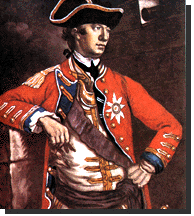
General Howe
Stetson
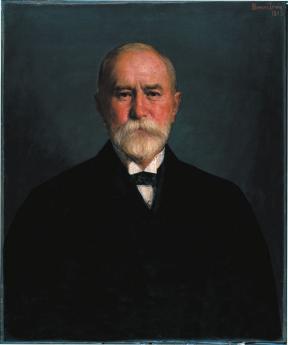
John Stetson
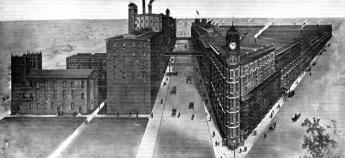
Stetson Hat Factory
Fees for Trial Lawyers, Section 1983 Variety

Abuse
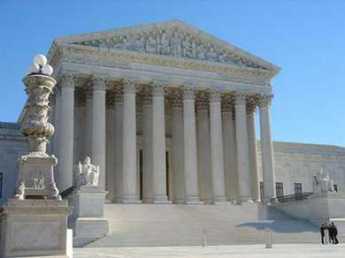
Supreme Court
Financing a Research University

Harvard

Oxford
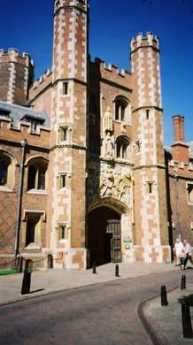
Cambridge

British
The Barnes Foundation: Comments on the Economics of Art (2)
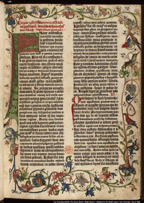

Johann Gutenberg, creator of mass produced books, died in poverty
The Republican Convention (1900)
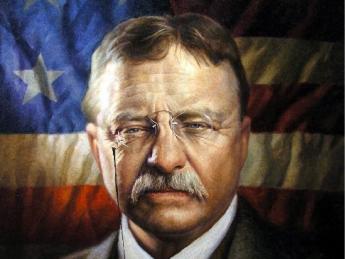
Theodore Roosevelt
Republican Convention in the Wigwam (1860)
Malpractice Epidemic?

The best way to avoid malpractice suits is to avoid committing malpractice in the first place

The Tort Bar
Rise and Fall of Life Insurance
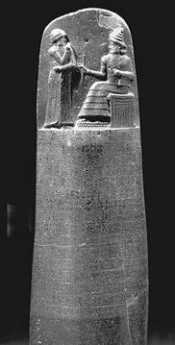
Hammurabi Code
Howe's Choice: To Philadelphia, or Saratoga?

General Howe
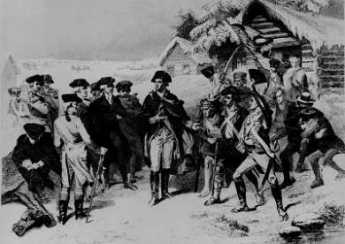
Winter 1777
The Uncertain Revolution: Washington and the Continental Army at Morristown: John T. Cunningham: ISBN-13: 978-1593220280
Amazon Defeat and Disaster: Philadelphia Falls to the Enemy
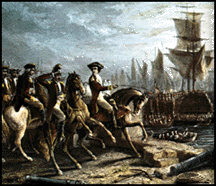
Howe

Lord George Germaine
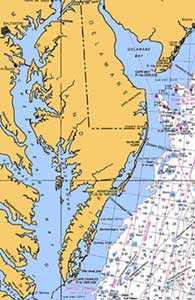
Chesapeake Bay
Our Federal Reserve: Okayed (3)
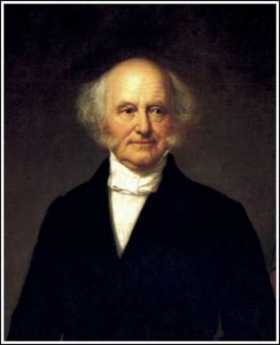
Martin van Buren
What Happened in Philadelphia on July 4, 1776?
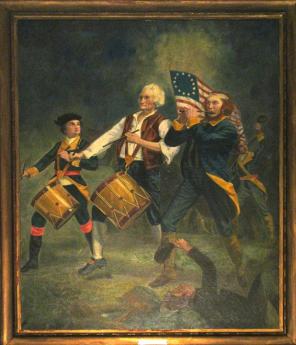
Spirit of 76'
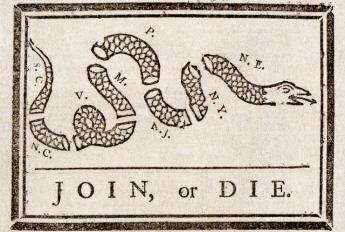
Colonist's Complaint
Philadelphia in 1976: Legionaire's Disease

The Yellow Fever
Philadelphia in 1876: The Centennial
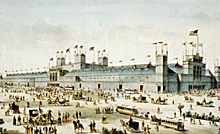
The Centennial Exhibition
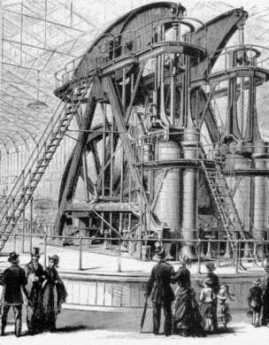
Corliss Steam Engine.
27 Blogs
Germantown Nurses the Yellow Fever, 1793
 Refugees from Haiti slave revolts brought Yellow Fever to south Philadelphia.
Refugees from Haiti slave revolts brought Yellow Fever to south Philadelphia.
Articles of Confederation: Flaws
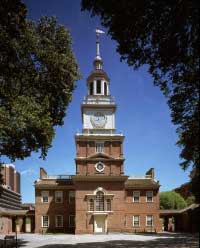 Some subtle features make the Constitution a vast improvement over the Articles of Confederation.
Some subtle features make the Constitution a vast improvement over the Articles of Confederation.
Investment Strategies
 An insight into the success of a little-known fund run by a virtually anonymous family.
An insight into the success of a little-known fund run by a virtually anonymous family.
Or, A Few Bad Apples?
 A few doctors do get sued more than others, but research has failed to produce a simple explanation.
A few doctors do get sued more than others, but research has failed to produce a simple explanation.
The First Pennamite War (1769-1771)
 The Penn family called Sherrif Jennings to evict Connecticut poachers from their land, along with a glamorous adventurer named Ogden who burned the cabins. The fifth time this happened, it was almost too bad about Ogden.
The Penn family called Sherrif Jennings to evict Connecticut poachers from their land, along with a glamorous adventurer named Ogden who burned the cabins. The fifth time this happened, it was almost too bad about Ogden.
The Economic Power of Laws
 The power to tax is the power to destroy, and so is the power to regulate. But anarchy can also destroy.
The power to tax is the power to destroy, and so is the power to regulate. But anarchy can also destroy.
The Decision of Trenton (1782) Under the Articles of Confederation
 The 1782 Decision of Trenton simply awarded the Wyoming Valley to Pennsylvania. Strong suspicions exist that other secret decisions were never made public. Like awarding the Western Reserve of Ohio, to Connecticut.
The 1782 Decision of Trenton simply awarded the Wyoming Valley to Pennsylvania. Strong suspicions exist that other secret decisions were never made public. Like awarding the Western Reserve of Ohio, to Connecticut.
German Origins of the Philadelphia Orchestra
 Provoked by catastrophes in distant Europe, each of the four waves of German immigration to America brought us a different musical style. Since more Americans are of German ancestry than any other, there was always a large audience for new German musical styles.
Provoked by catastrophes in distant Europe, each of the four waves of German immigration to America brought us a different musical style. Since more Americans are of German ancestry than any other, there was always a large audience for new German musical styles.
Reviving the Mummers
 The Philadelphia Mummers Parade on New Year's Day is declining in both attendance and participation, just like its South Philadelphia home environment. Television is the likely main cause of this, but management difficulty and environment changes contributed, too.
The Philadelphia Mummers Parade on New Year's Day is declining in both attendance and participation, just like its South Philadelphia home environment. Television is the likely main cause of this, but management difficulty and environment changes contributed, too.
Use the Internet for Your Club

The Franklin Inn
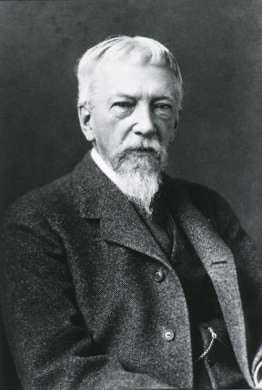 Founded by S. Weir Mitchell as a literary society, this little club hidden on Camac Street has been the center of Philadelphia's literary life for more than a century.
Founded by S. Weir Mitchell as a literary society, this little club hidden on Camac Street has been the center of Philadelphia's literary life for more than a century.
Harvard Men Suggest a Cold Place for Yale
 The northeast corner of Pennsylvania was once covered by a glacier.
The northeast corner of Pennsylvania was once covered by a glacier.
The Final Capture of Philadelphia (6)

Stetson
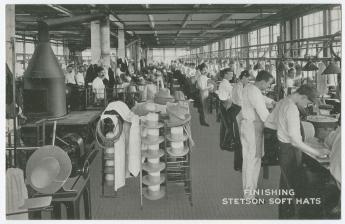 For almost a century, Philadelphia-made Stetson hats were found on every cowboy head.
For almost a century, Philadelphia-made Stetson hats were found on every cowboy head.
Fees for Trial Lawyers, Section 1983 Variety
 Suing your own town is now getting so popular it clogs the courts.
Suing your own town is now getting so popular it clogs the courts.
Financing a Research University
 Responding to staggering financial temptations, our most prestigious universities are beginning to put both themselves and the rest of the country at unacceptable risk.
Responding to staggering financial temptations, our most prestigious universities are beginning to put both themselves and the rest of the country at unacceptable risk.
The Barnes Foundation: Comments on the Economics of Art (2)
 Well chosen fine art will appreciate in value over time. If a museum's endowment doesn't grow at the same rate to maintain it, eventually some of the art will have to be sold.
Well chosen fine art will appreciate in value over time. If a museum's endowment doesn't grow at the same rate to maintain it, eventually some of the art will have to be sold.
The Republican Convention (1900)
 The political bosses wanted to get Teddy Roosevelt out of the Governor's chair in Albany. As things turned out, they made him President of the United States.
The political bosses wanted to get Teddy Roosevelt out of the Governor's chair in Albany. As things turned out, they made him President of the United States.
Republican Convention in the Wigwam (1860)
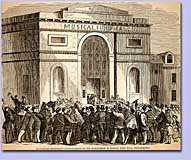 Honest Abe got nominated for President in a raucous brawl.
Honest Abe got nominated for President in a raucous brawl.
Malpractice Epidemic?
It's often the best doctors, not the worst, who get sued for malpractice.
Rise and Fall of Life Insurance
 Like many things, insurance started here. It's now mostly all gone.
Like many things, insurance started here. It's now mostly all gone.
Howe's Choice: To Philadelphia, or Saratoga?
 The Howe brothers may have been socialites, and they had formerly been members of the Parliamentary party favorable to peace in the colonies. But they were also seasoned, smart soldiers who played hard and played to win. Washington proved to be their match, but he did have to prove it.
The Howe brothers may have been socialites, and they had formerly been members of the Parliamentary party favorable to peace in the colonies. But they were also seasoned, smart soldiers who played hard and played to win. Washington proved to be their match, but he did have to prove it.
Defeat and Disaster: Philadelphia Falls to the Enemy

Our Federal Reserve: Okayed (3)
 Martin van Buren of Old Kinderhook invented a lot of what
Martin van Buren of Old Kinderhook invented a lot of what
What Happened in Philadelphia on July 4, 1776?
 There were about 30,000 residents, just a small town, but it was the second largest city in the English-speaking world. Aside from wagons, there were thirty wheeled vehicles. But this is the town where decisions were made.
There were about 30,000 residents, just a small town, but it was the second largest city in the English-speaking world. Aside from wagons, there were thirty wheeled vehicles. But this is the town where decisions were made.
Philadelphia in 1976: Legionaire's Disease
 Philadelphia's ambitious Bicentennial celebration of the Declaration of Independence was ruined by an epidemic of a new disease that seemed to focus on tourists.
Philadelphia's ambitious Bicentennial celebration of the Declaration of Independence was ruined by an epidemic of a new disease that seemed to focus on tourists.
Philadelphia in 1876: The Centennial
 A hundred years after the Declaration, Philadelphia announced to the world that is was here. And Philadelphia learned there was a lot out there in the rest of the world.
A hundred years after the Declaration, Philadelphia announced to the world that is was here. And Philadelphia learned there was a lot out there in the rest of the world.